Dear friends,
After the visits to Volubilis and Moulay Idriss, we drove through some stark rolling hill country towards the ancient city of Fes. I just managed to capture some of the scenes through the bus window showing the rich browns and golds rendered by the drought and even a shepherd and his sheep.
Tilled fields and tussocks but not a lot else at this time of year.
Searching for some pastures for his sheep to graze on, this shepherd walks ahead with his donkey
Another flock of sheep high on the skyline
A spot of colour amid the brown landscape – one of the man-made dams
built to provide water for the region for the towns and for irrigation.
And then there was Fes. Founded in the 9th century, Fes reached its height in the 13th–14th centuries under the Marinids, when it replaced Marrakesh as the capital of the kingdom. The urban fabric and the principal monuments in the medina – madrasas, fondouks, palaces, residences, mosques and fountains – date from this period. Although the political capital of Morocco was transferred to Rabat in 1912, Fes has retained its status as the country’s cultural and spiritual centre.
The city of Fes, such a splendid sight from the adjacent hills
The Medina of Fes is considered as one of the most extensive and best conserved historic towns of the Arab-Muslim world. The unpaved urban space conserves the majority of its original functions and attribute. It not only represents an outstanding architectural, archaeological and urban heritage, but also transmits a life style, skills and a culture that persist and are renewed despite the diverse effects of the evolving modern societies.
We entered into the city of Fes through this gateway
So many interesting small alleys to explore, or perhaps get lost in
As we had arrived in the evening, we had but to enjoy the Riad Fes which was our lodging for the next two nights. The riad had all the charm of an ancient home but was not lacking in modern comforts either.
My suite with the bedroom to the right – not too shabby!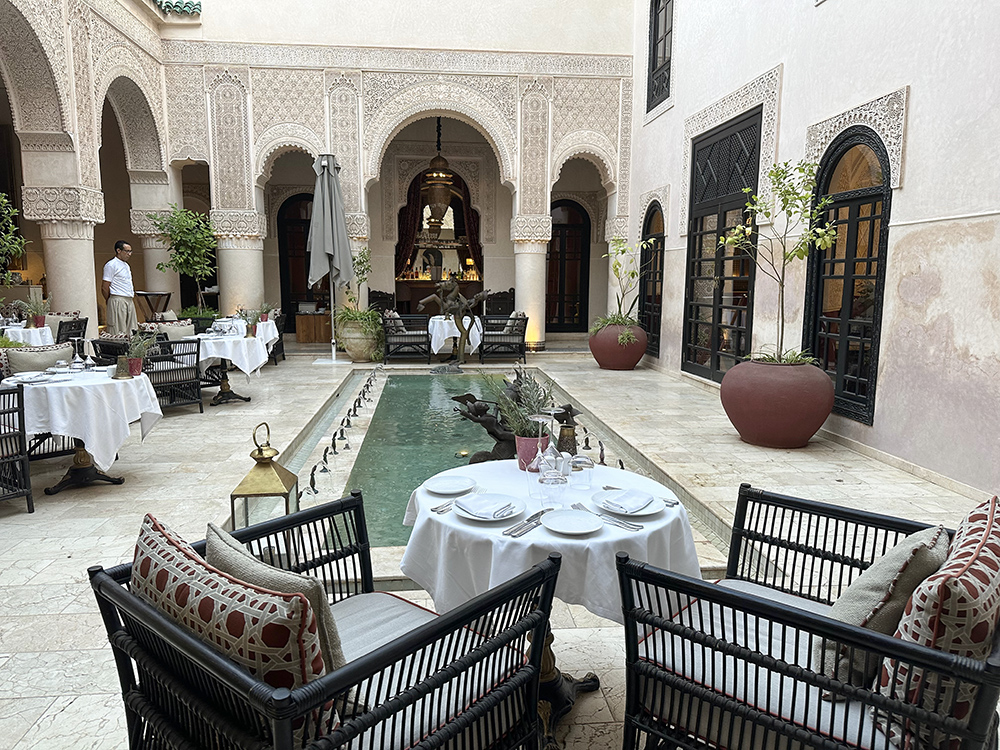
The dining room pictured from the door and …
… looking down from three stories above
Beautiful music accompanied the dinner
The bar with this impressive little bronze statue and a glimpse of the photographer in the mirror
Alas, I had no time to enjoy a massage but the spa certainly was tempting if the reception was an indication of the style
On the way to my room at the Riad, there was this beautiful door, leading I know not where
The view from the rooftop bar with the evening light casting a warm glow over the city
A cocktail before dinner was most enjoyable in the company of fellow travelers and the magnificent view beyond
My cocktail echoed the colours of the flowers and lamp on a neighboring rooftop
After a most relaxed evening, the following day was full-on sight-seeing, with Rachid, a very knowledgable and amusing guide who took us from place to place offering information and observations about the city, its history, architecture, culture, the day to day life in the markets and workplaces. The first stop was to marvel at the highly ornate 20th-century gates of the Dar el-Makhsen Palace at Place des Alaouites. This vast complex surrounded by high walls was the main residence of the Sultan, together with his guard and retinue of servants. Part of the palace is still used by the King of Morocco when he comes to stay in the city, thus not open to the public. Covering 7 hectares, the walls enclose numerous buildings and pavilions, with courtyards and fountains, and many formal and informal gardens.
The main gate of the palace, with just a few tourists, and a cat
The upper arches of two of the doors and the beautiful mosaics, beams and roof tiles
A close up of the gilt bronze doors
One of the doors and the detail of the arch of another, similar but with slightly different patterns
Circling around the city to see it from several angles, this view shows a part of a cemetery
and a part of the wall and fortifications of the medina
On the outskirts we noticed this establishment, of key importance given the
number of donkeys which are used for transport of goods and people inside the medina
Plenty of storks using this part of the wall for their nests
Just loved the simplicity of this window with carving above and a side shutter to shield a view of the room
We had an interesting visit to the Naji Ceramic workshops
So many artisans working on the pottery – to form the objects, paint them and solder metal into them as well
A solderer at work and a fine example of the metal filigree and patterns on this pot
In another section, it was all about the mosaics for the tiles and fountains. I was fascinated to learn that the
mosaic patterns are prepared up-side down. How the artists remember the intricate patterns and colours is such a skill 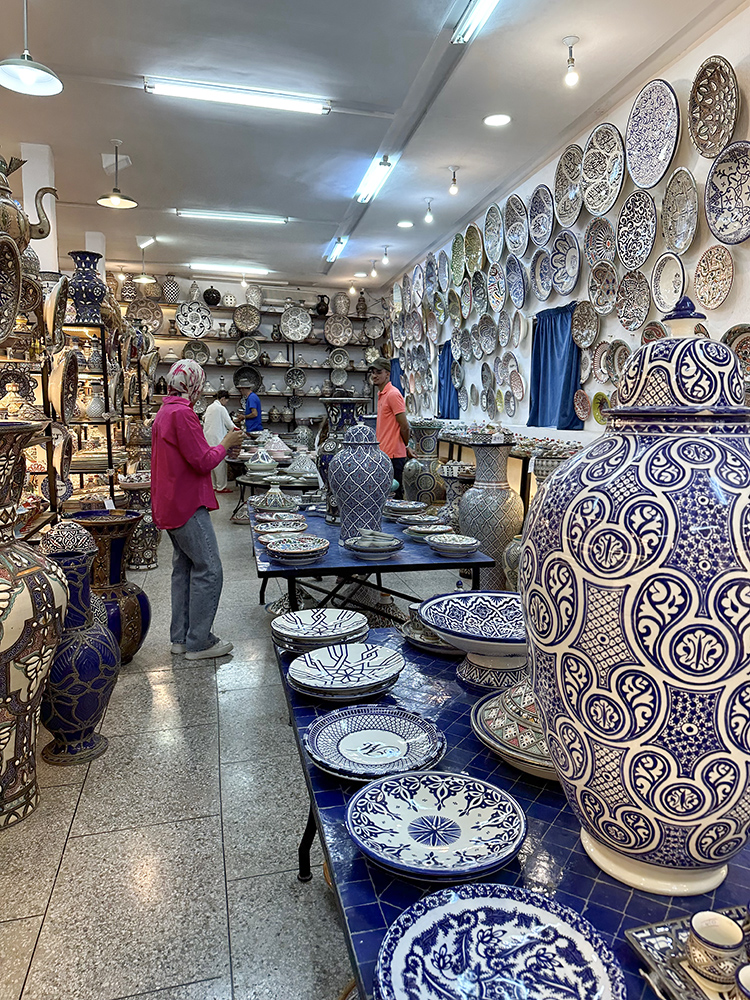
Just a small shop to sell their wares – I didn’t buy anything, just admired the art
Inside the medina, we first visited the Ibn Danan Synagogue, entering through a simple doorway
indistinguishable from the neighboring houses
This 17th Century synagogue is the property of a family of Rabbis from Andalusia.
We spent some considerable time wandering in the souks (markets) where all and everything is displayed and sold. The location of each area reflects the hierarchy dictated by the value placed on the various goods on offer. Every type of craft has its own street, or part of a street which has resulted in a logical but relatively complex layout.
A group of older and younger men, maybe family, walking in one of the streets
The presentation of each set of goods is important
Colorful and mouthwatering displays of vegetables, dates, olives and nuts
What a splendid arrangement of every kind of pickled olives, other fruit and vegetables and sauces
Some cooks at work with their wares fresh and ready for the day’s purchases
Grains, nuts, figs and dates to choose from
Skeins of silks and cottons in glorious colours hung above this shaded street
With dyers at work for all to see all along the street – backbreaking work
Every shade of any colour you might want to choose, shelved and hung in the booths along the street
Beautifully embroidered slippers also on display, to match with any outfit
We visited a weaving room with huge looms, skillful weavers and a mass of colorful yarns, shawls, bed and table covers
Clothing on display upstairs – anyone for a belly dancing outfit?
Or perhaps something a little more modest and elegant in silk or cotton, with or without pattern or embroidery 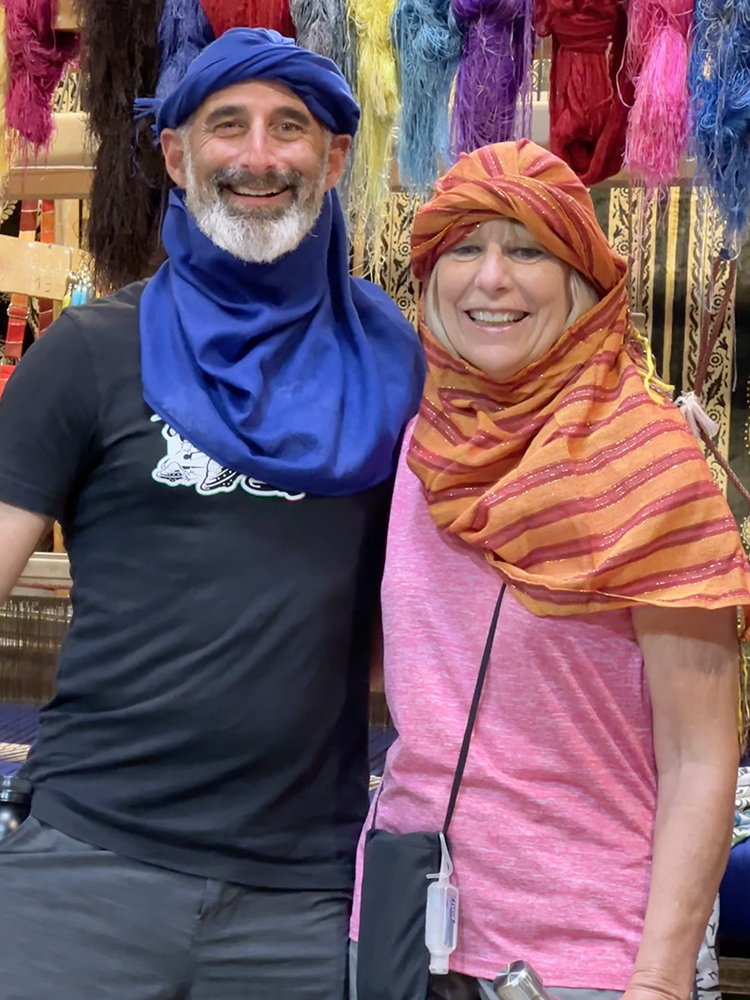
Two of our group – Chris and Laurie modeling the correct tying of shawls to cover the head and neck
and when needed, the neck piece can be raised to cover the face
Back into the alleyways and a patient donkey awaits his next load. Looks like he needs a rest-cure at the donkey sanctuary
Time for lunch after a solid morning of sightseeing, taking a moment to digest all we had seen as well as our meal
One of the tables reserved for our group under beautiful mosaics and traditional glass lamps
A wonderful array of salads and sauces – and this was just for starters, the main meal yet to be served
Wandering in the souks again, there was brass and other metal ware, and ….
… of course a selection of fez – the traditional headwear seen in many places in the Arab world,
and from whence it got its name
All manner of wooden objects and carvings, still being worked on
Some of which will then be gilded as this chair for a bride and groom to be carried in for their festivities
Animal skins on display and underneath a sign directing us to the famous tanneries of Fes
After being given a sprig of mint to hold under the nose to offset the quite intense smell,
we climbed to the roof of the leather market and there were the huge dying vats, workers busy at their tasks
Such vivid colours, especially the red, one of my favourites
And in to do the stamping to make sure the colour is even throughout the leather
Some of the leather goods for sale – jackets, boots and slippers and pouffs, any hue on which to rest your feet after a long day
Hoping that this beautiful white cat accompanying it’s master will never fall in ….!
A calmer and sweeter visit to one of the most renowned buildings in Fes, the Fondouk el-Nejjarine, was next on the itinerary. It was built in the 18th Century as a caravanserai (roadside inn) to provide food and shelter for traders in luxury goods arriving from the interior of the country. Classed as a historic monument in 1916, it is now a UNESCO World Heritage Site. It has been beautifully restored and its three floors now house the privately run Museum of Wood.
Our guide Rachid gave us a briefing before we entered the magnificent gateway
Such beautiful carving of the wooden balustrades and stone arches, and even the floor patterned with polished stones
A magnificent inlaid and decorated wooden chest displayed
A carved seat or perhaps throne or seat for a high ranking official, or for a rich merchant
The wooden, arched balustrade on the upper floor was particularly intricate
Although non-Muslims are not permitted to enter the tomb of Moulay Idriss II who ruled Morocco from 807 to 828 and is considered to be the founder of Fes, we were allowed a glimpse through the doorway. This shrine built at the beginning of the 18th Century is the most venerated in all of Morocco
The western vestibule, granting direct access to the mausoleum chamber beyond
A closer view through the doorway
Our final visit of the day was to the Al-Attarine Madrasa (religious school), near the Al-Qarawiyyin Mosque. It was built by the Sultan Uthman II Abu Said in 1323-5 and takes its name from the Souk al-Attarine, the spice and perfume market. It is considered one of the highest achievements of Marinid architecture due to its rich and harmonious decoration and its efficient use of limited space. The madrasa has been classified as historic heritage monument in Morocco since 1915 and has since been restored many times, but in a manner consistent with its original architectural style.
Western side of the courtyard, looking towards the entrance
One of the beautifully carved galleries along the sides of the courtyard
The “lambrequin”, the arch of the prayer hall’s entrance
Stucco decoration and coloured glass windows in the upper walls of the prayer hall
One could spend many days exploring the city of Fes, but even in the single day that we were escorted around some of the main areas by Rashid our guide, we could really feel the weight of the history and culture of this magnificent city and the beauty of the architecture in its ancient buildings.
Just to finish I have added a couple of snapshots of the cats we saw in the souks. Here are two who have clearly found a degree of comfort between the feet of a mannequin, and perched on a straw broom.
I hope you have enjoyed seeing a snapshot of the city of Fes, and in the next journal entry we will continue with our travels through Morocco, up into the High Atlas Mountains and beyond.
Wishing you all, the very best, until soon,
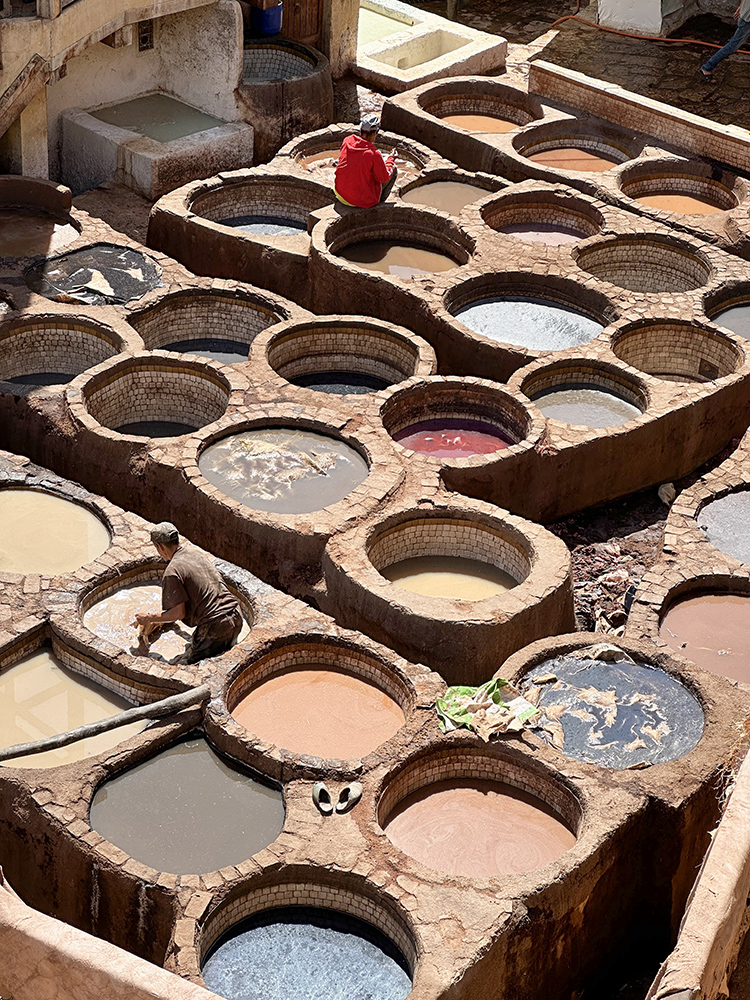
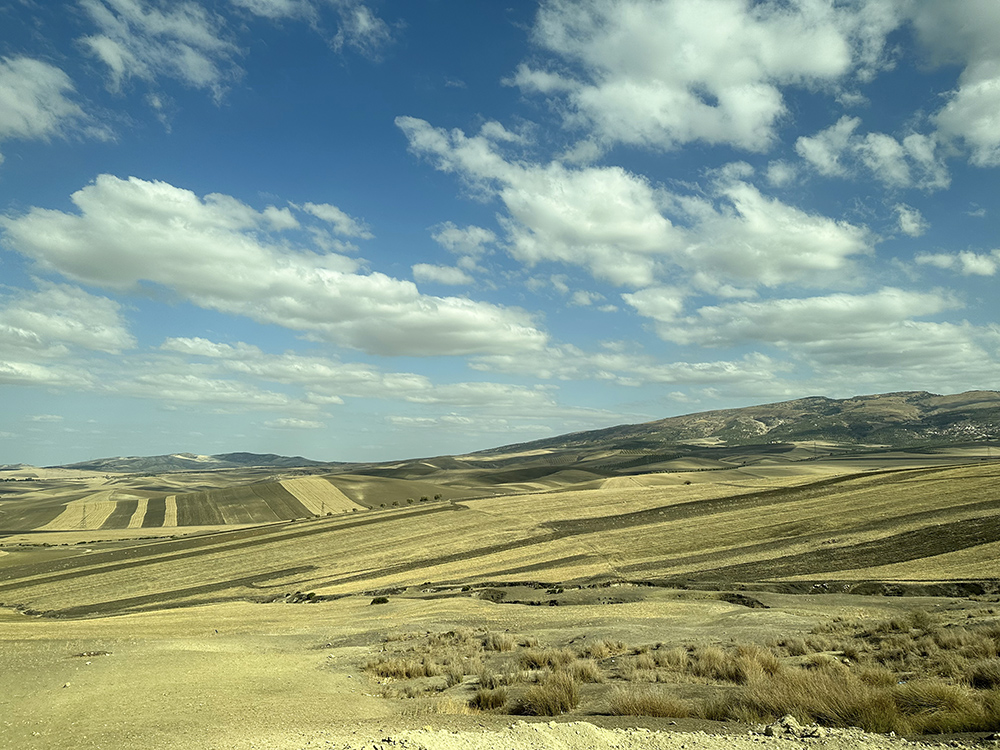
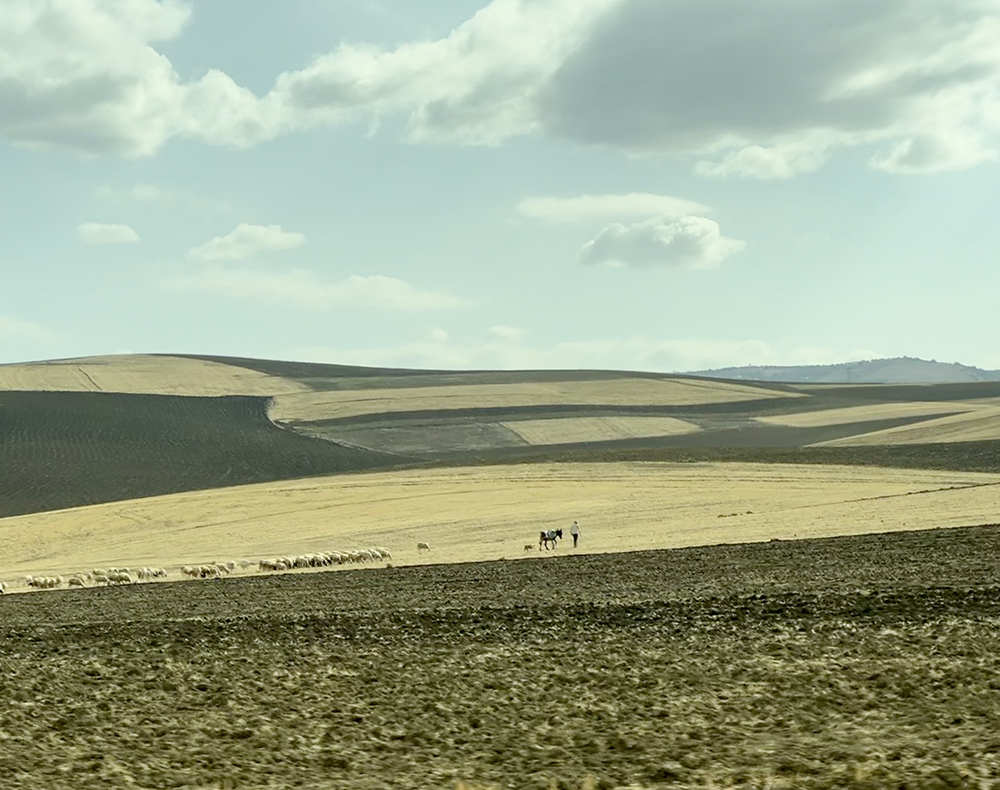
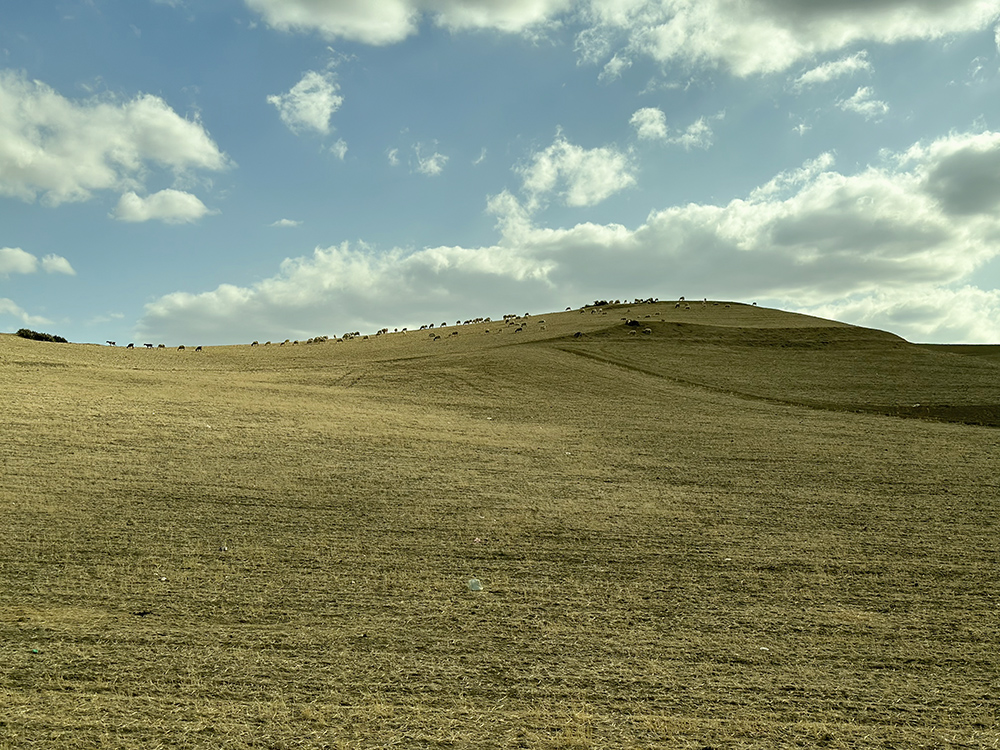
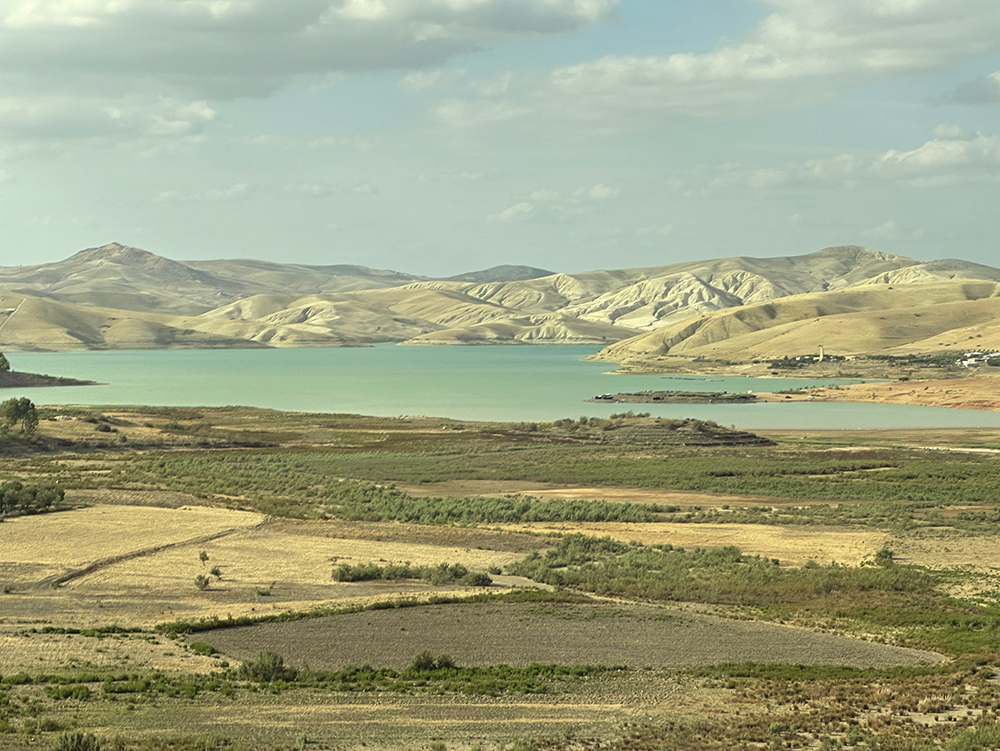
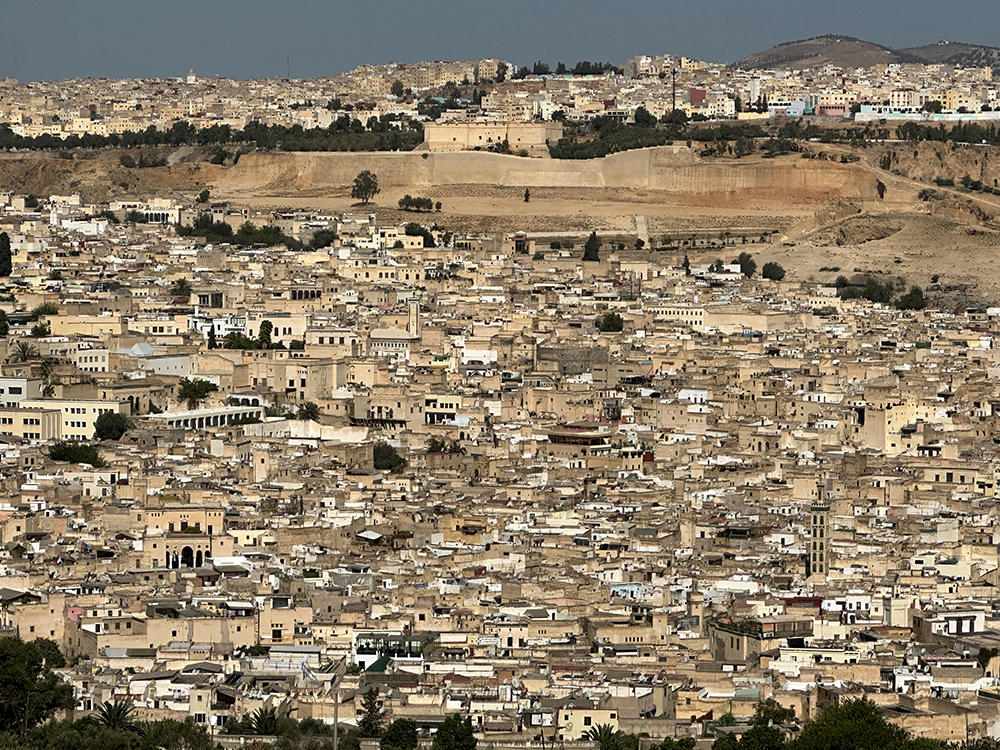
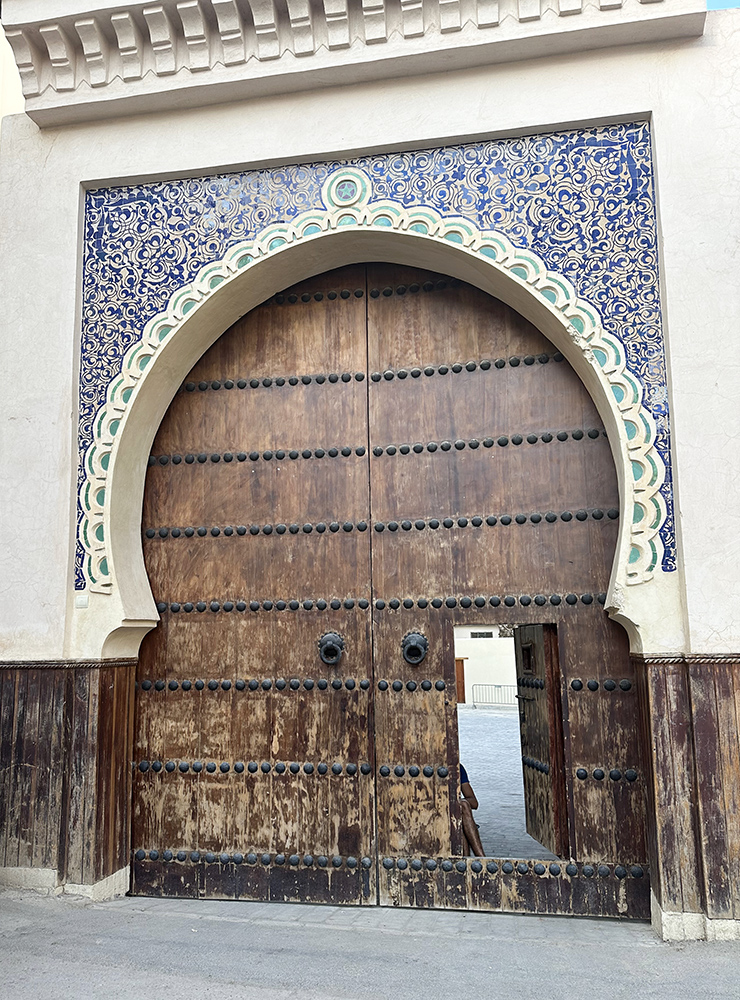
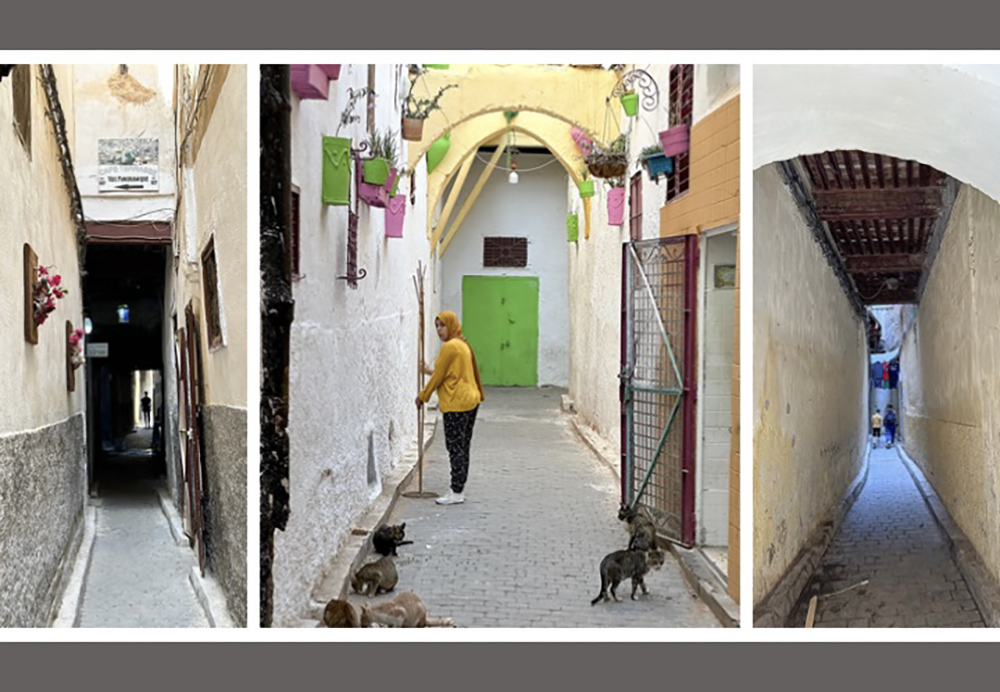
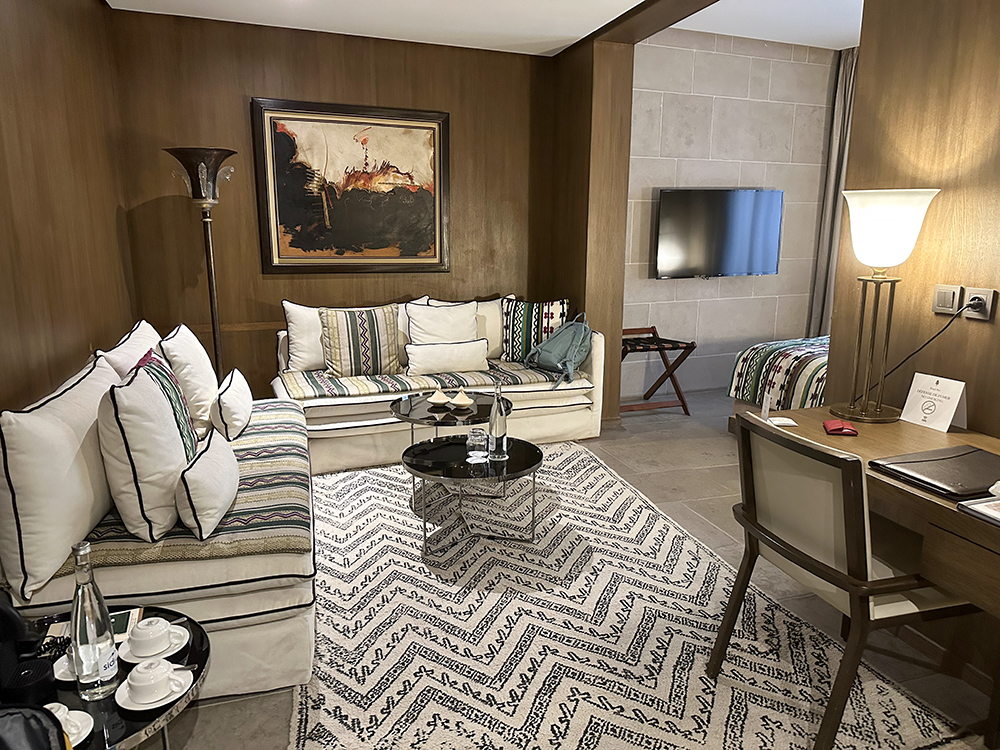
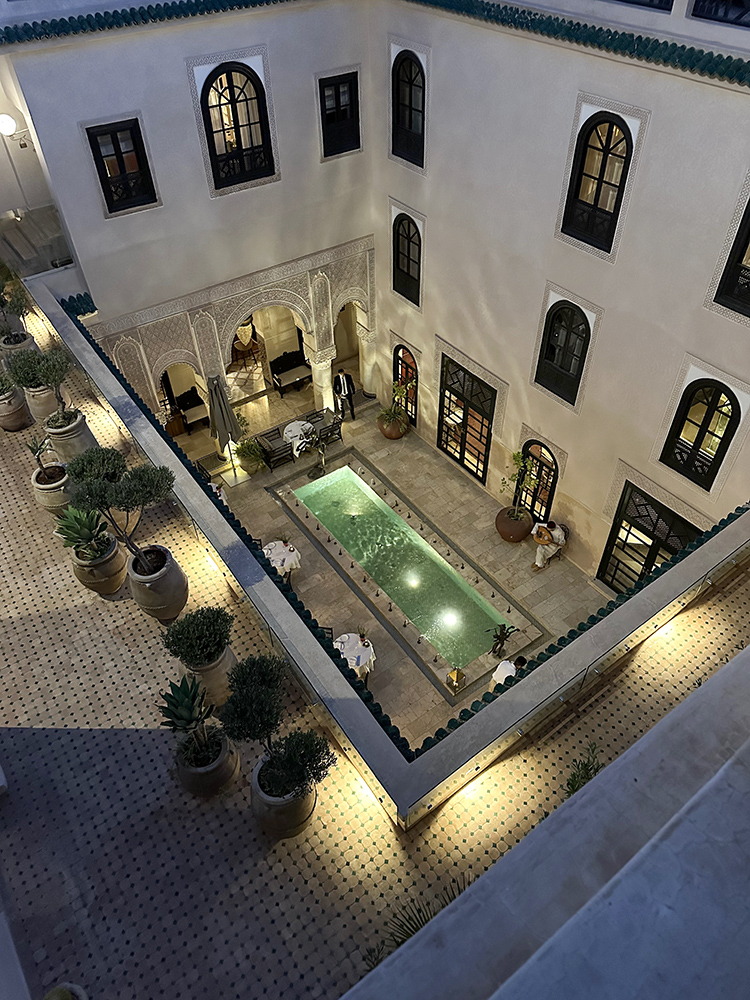
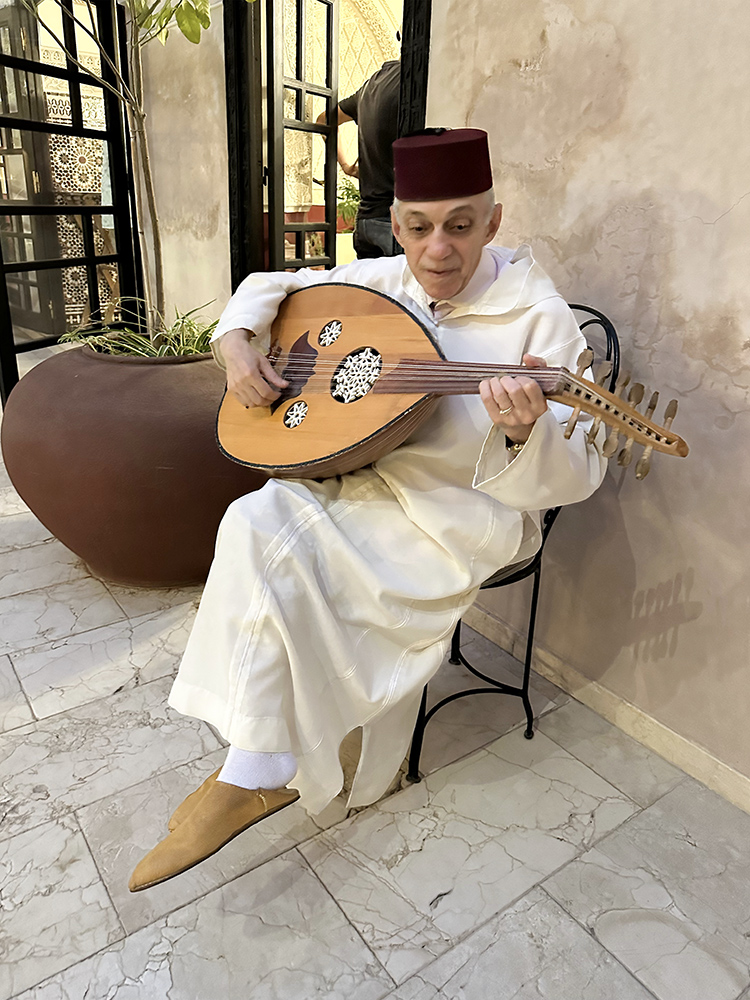
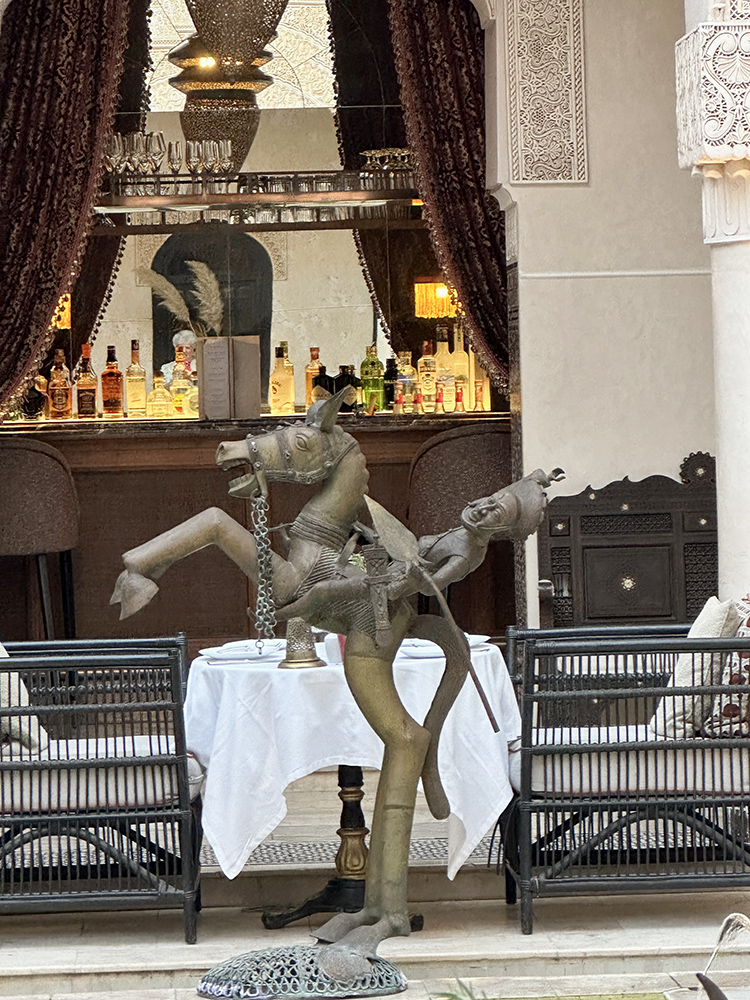
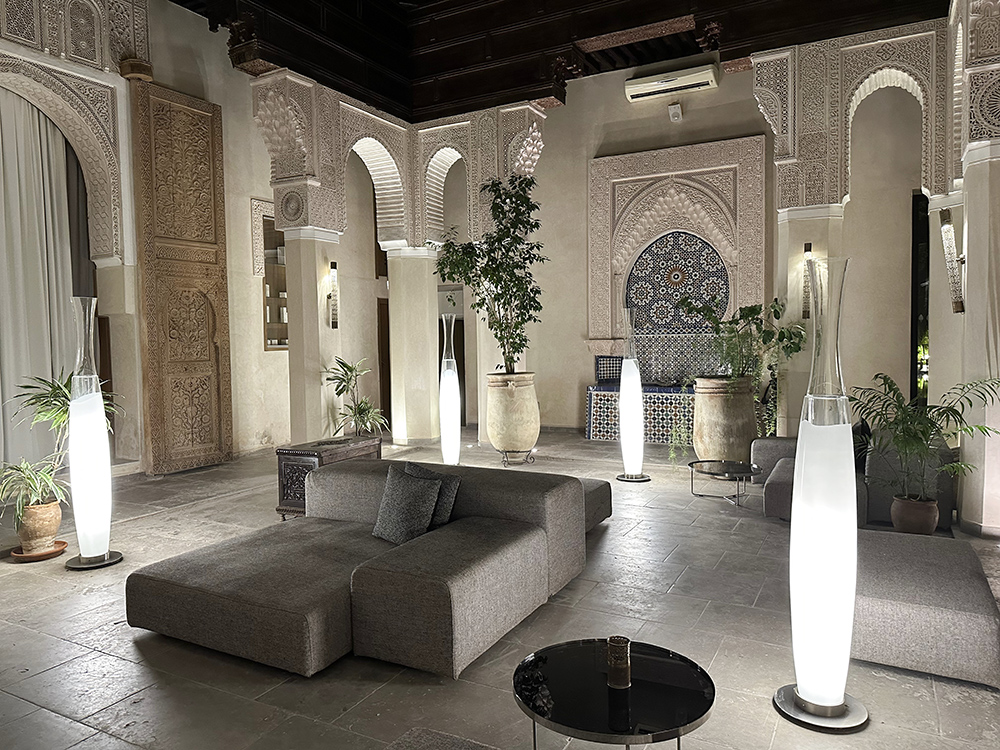
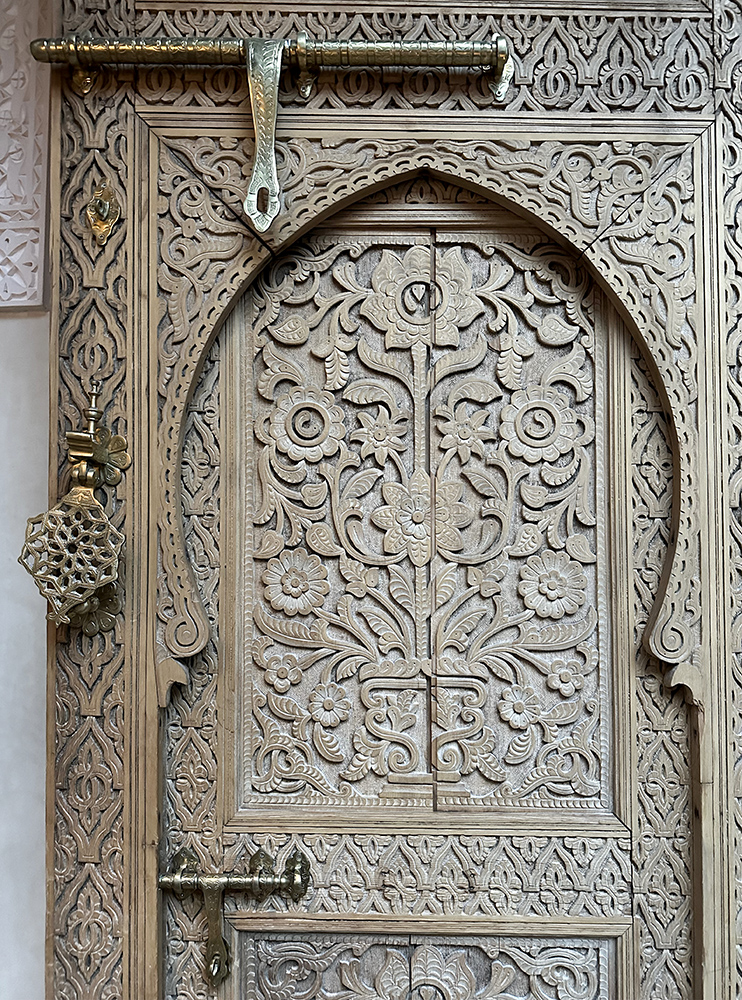
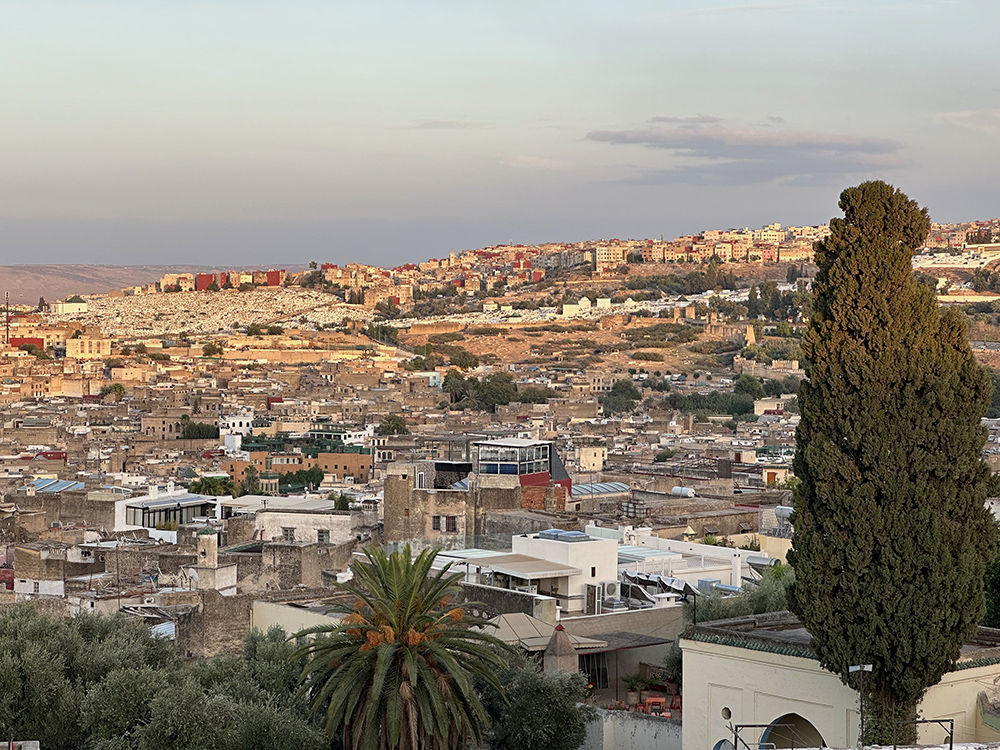
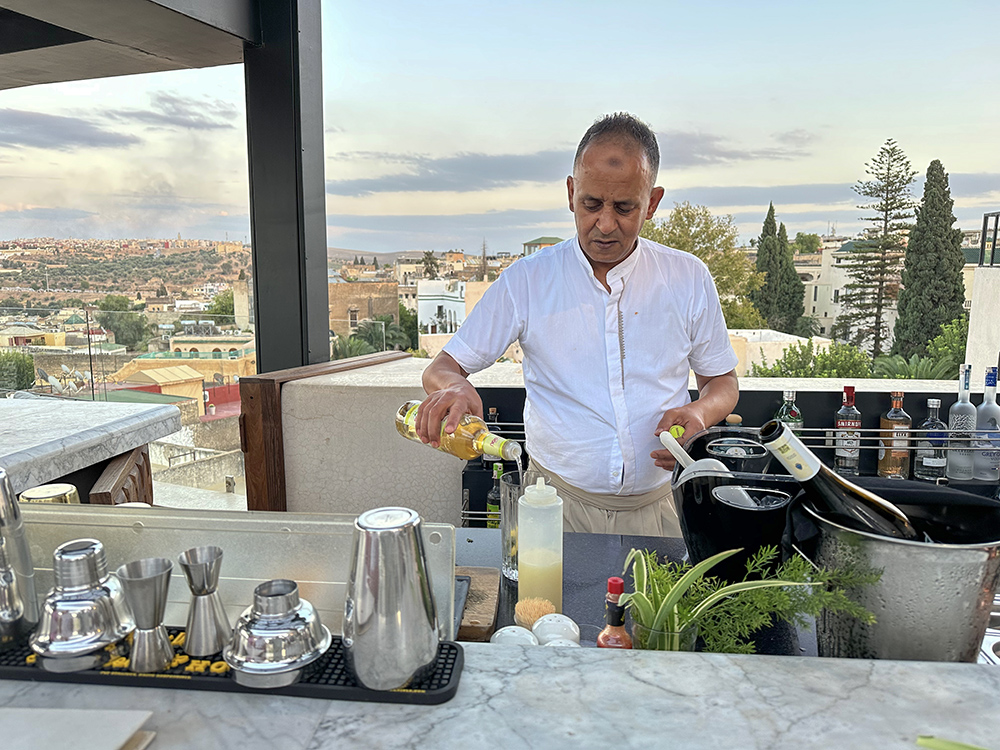
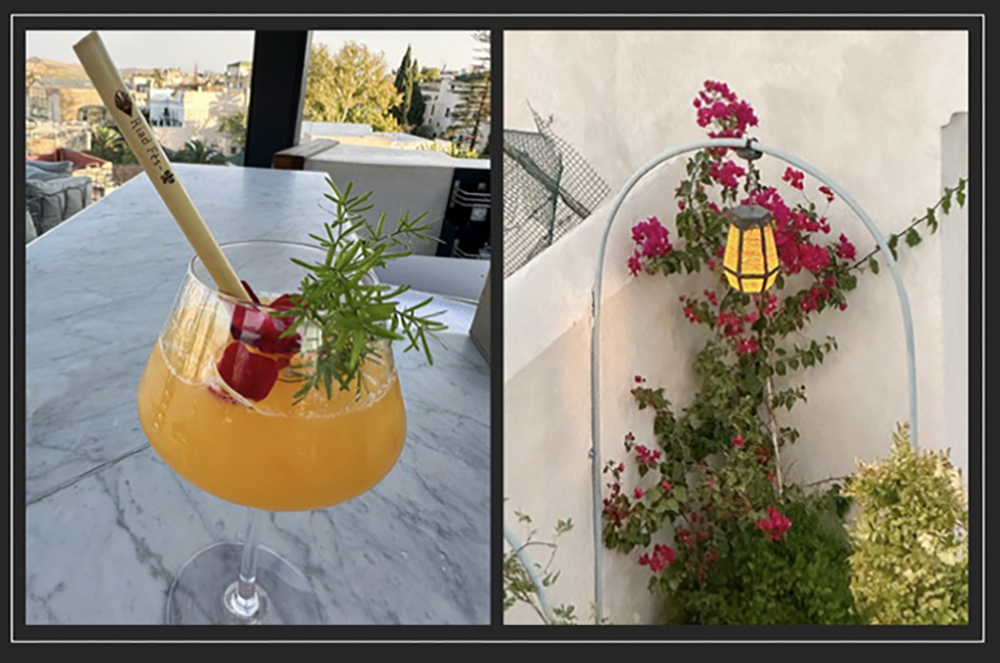
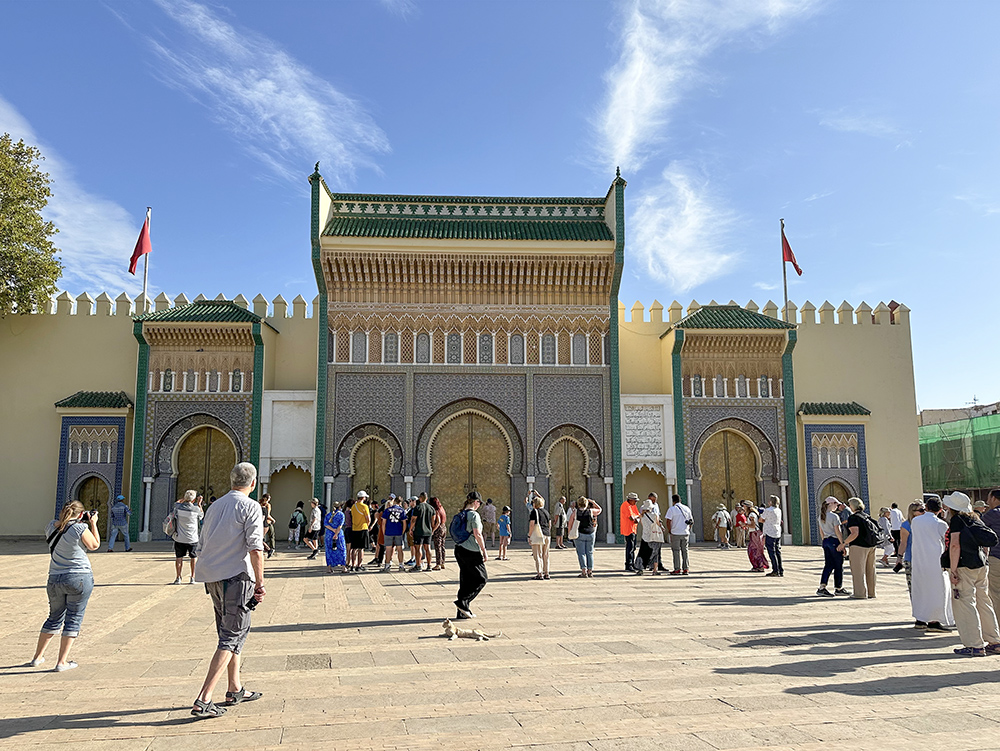
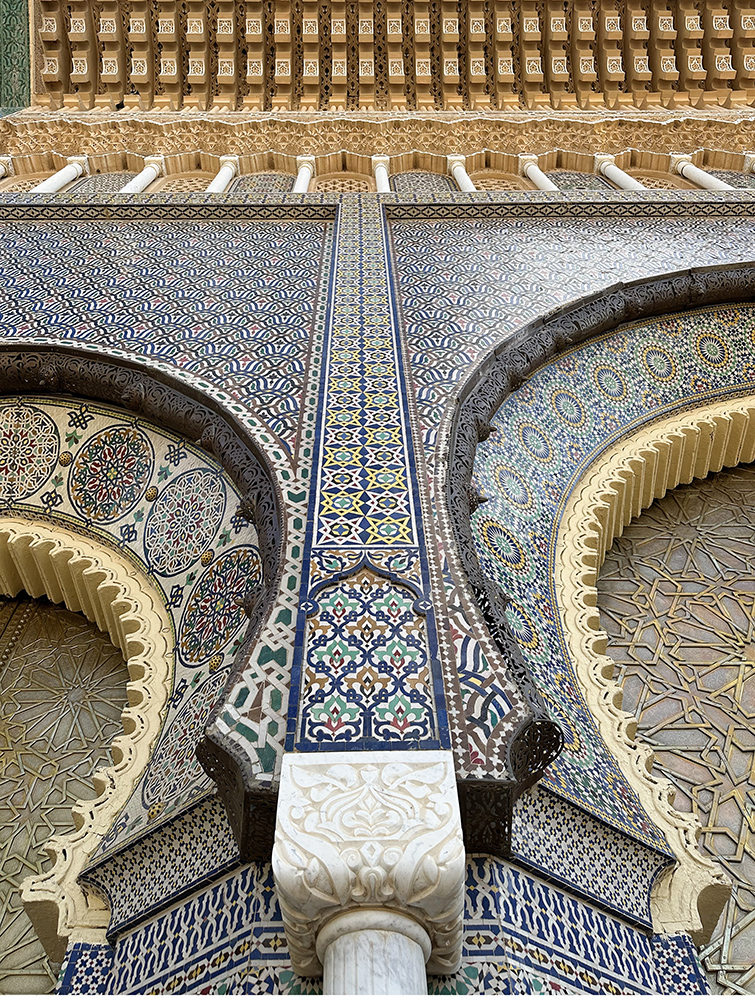
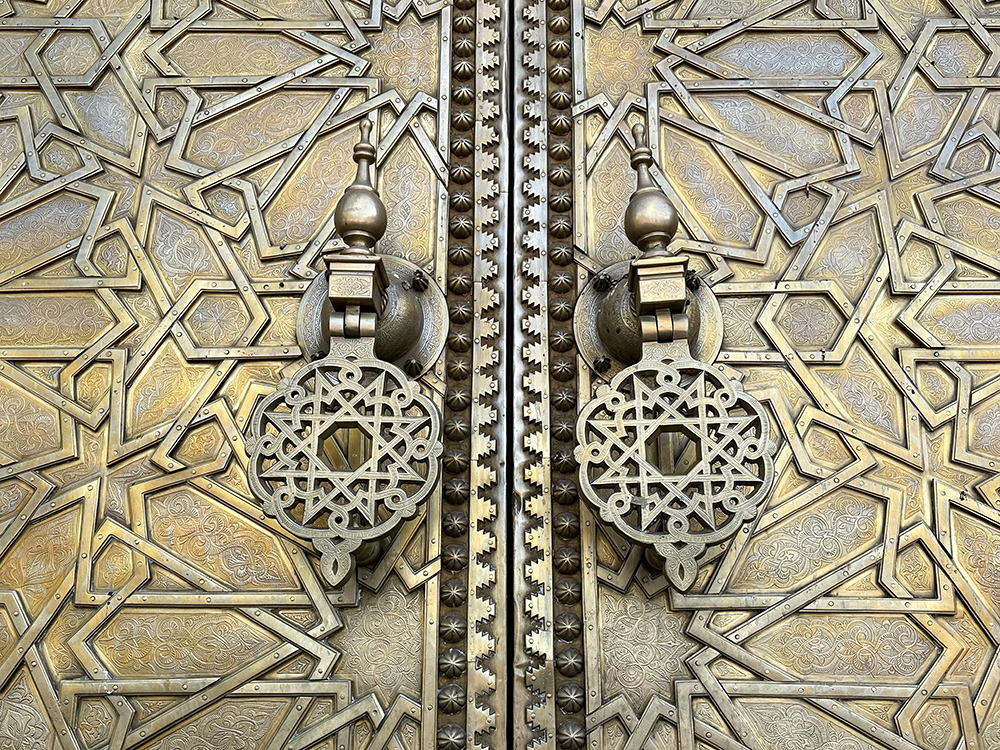
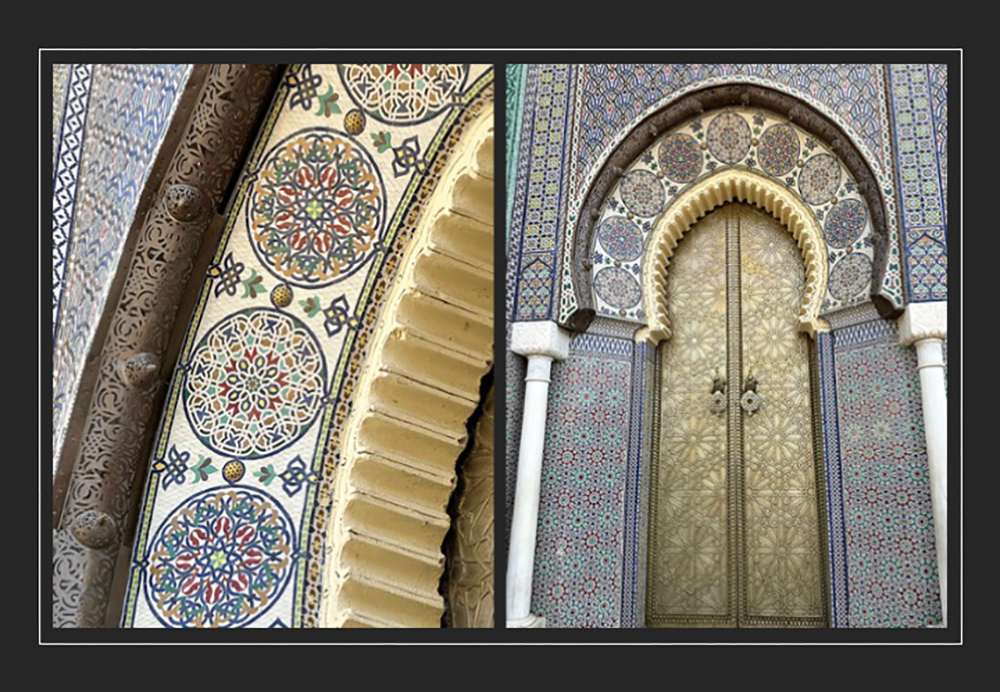
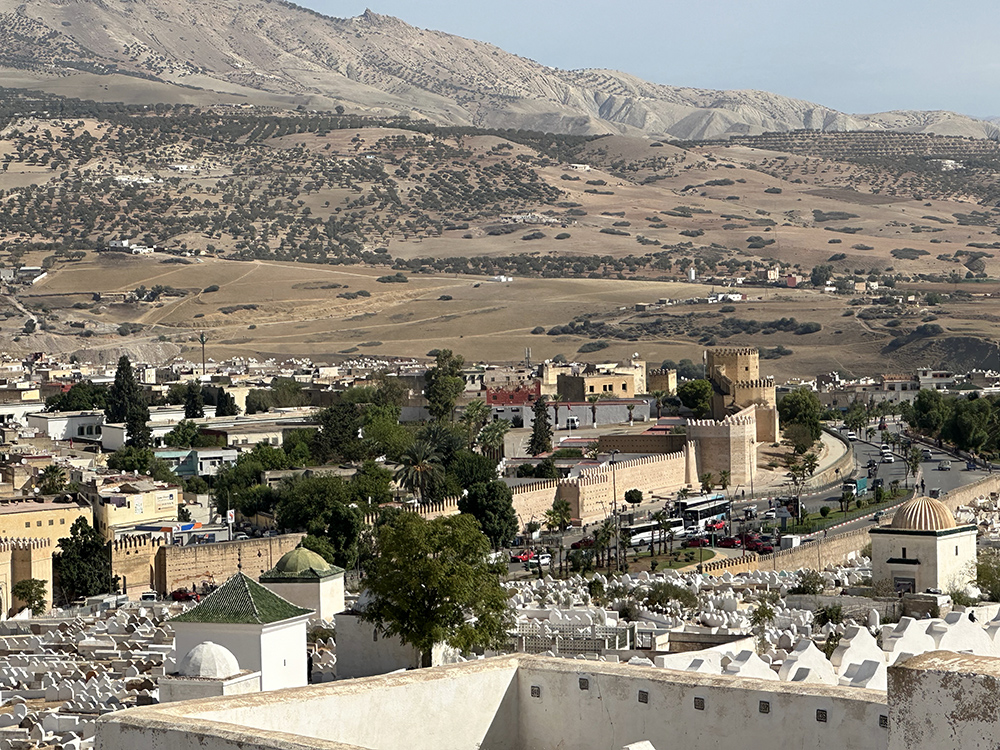
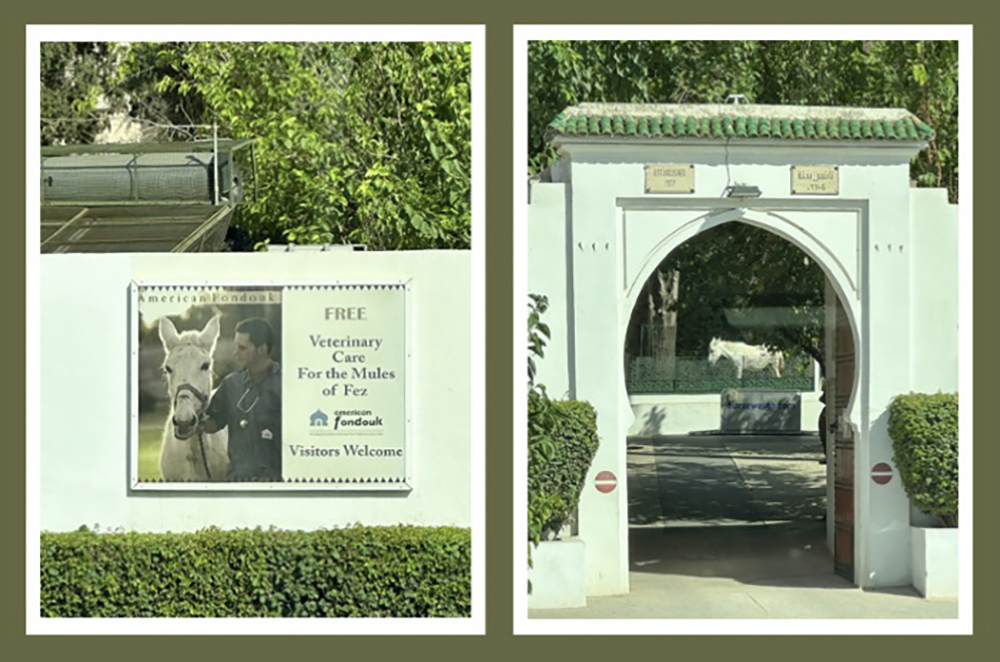
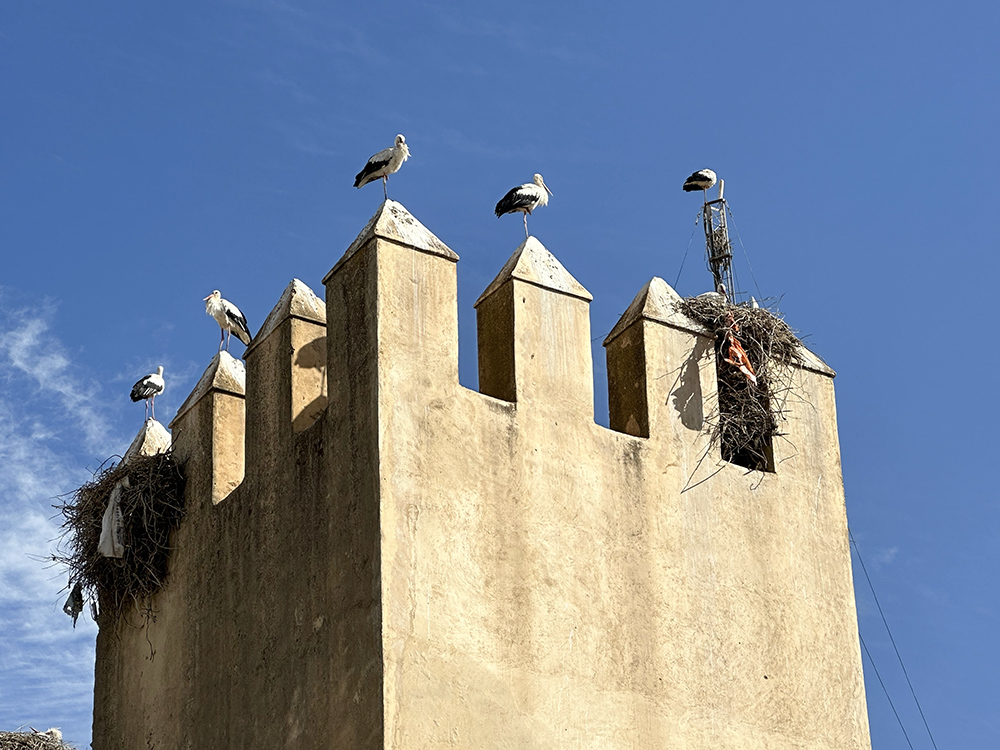
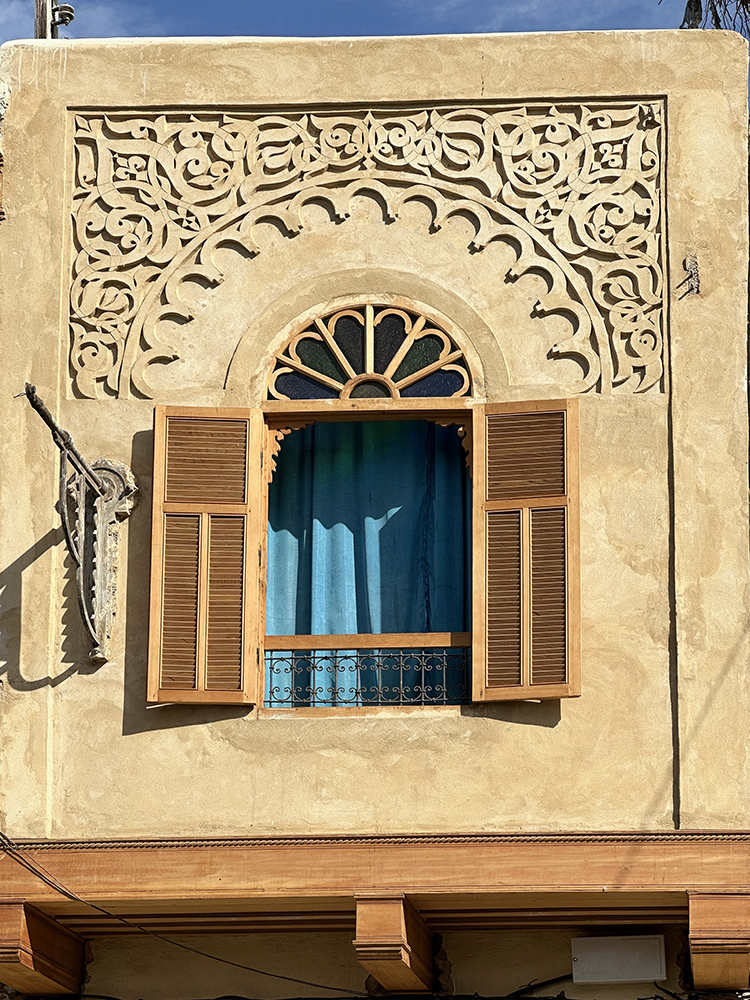
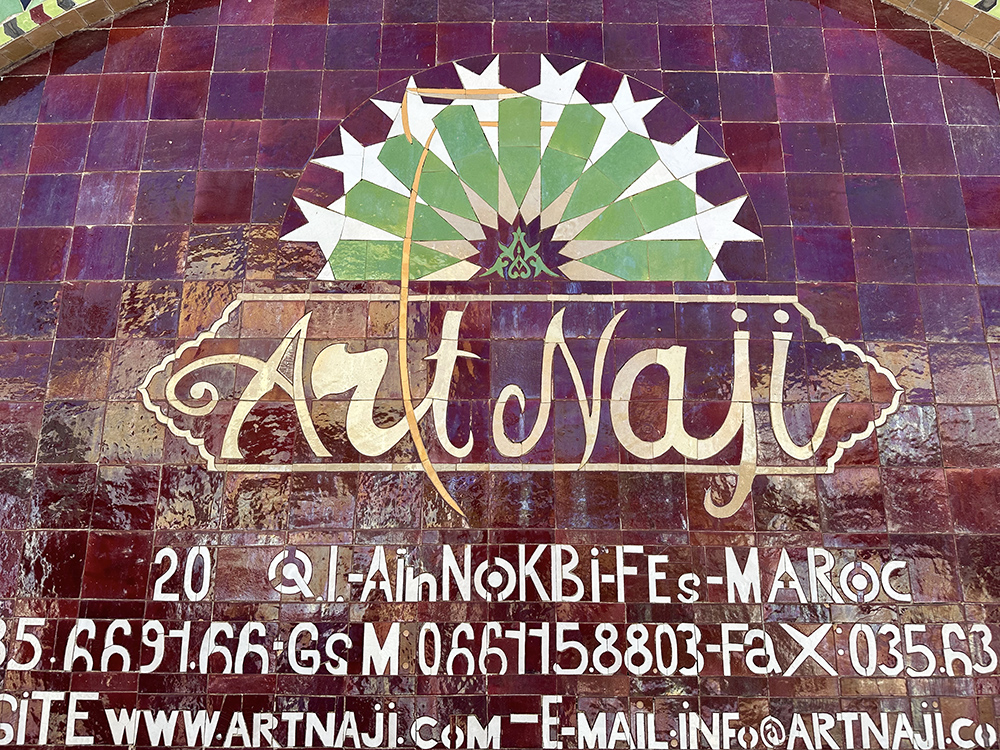
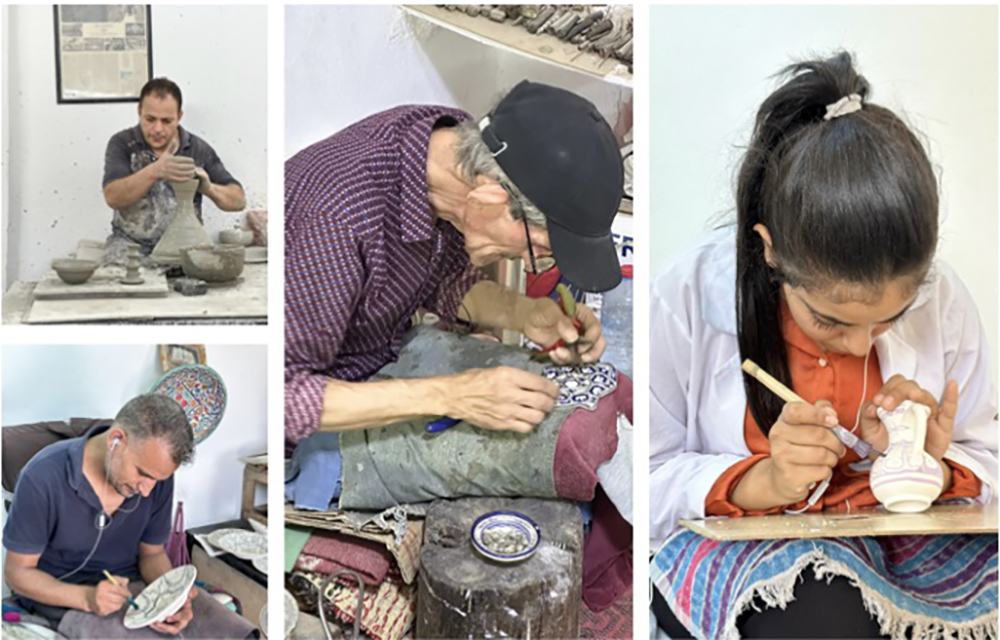
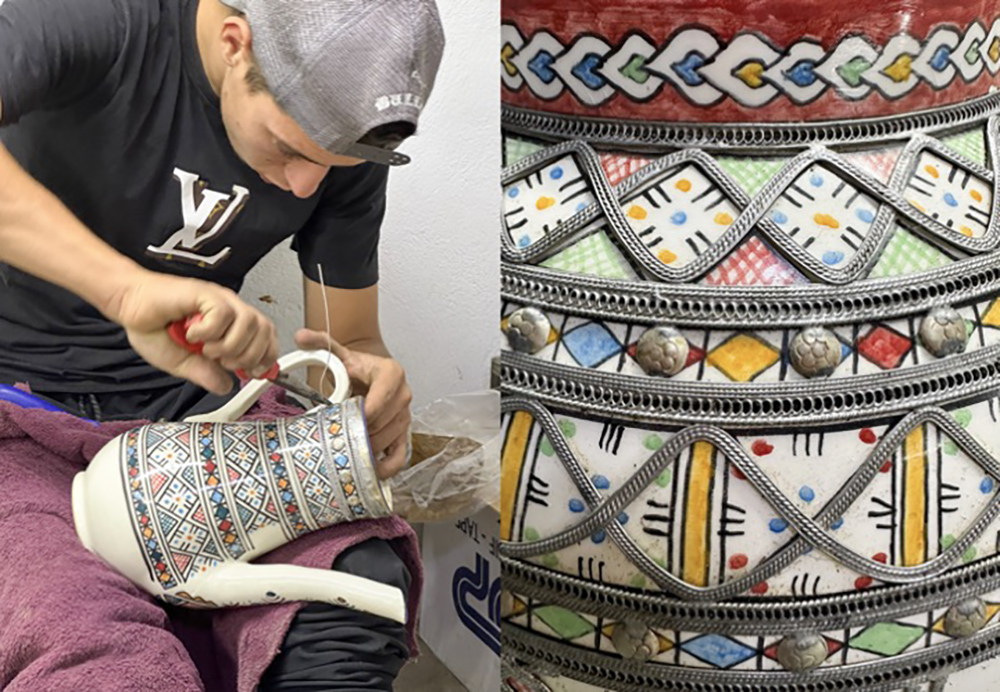
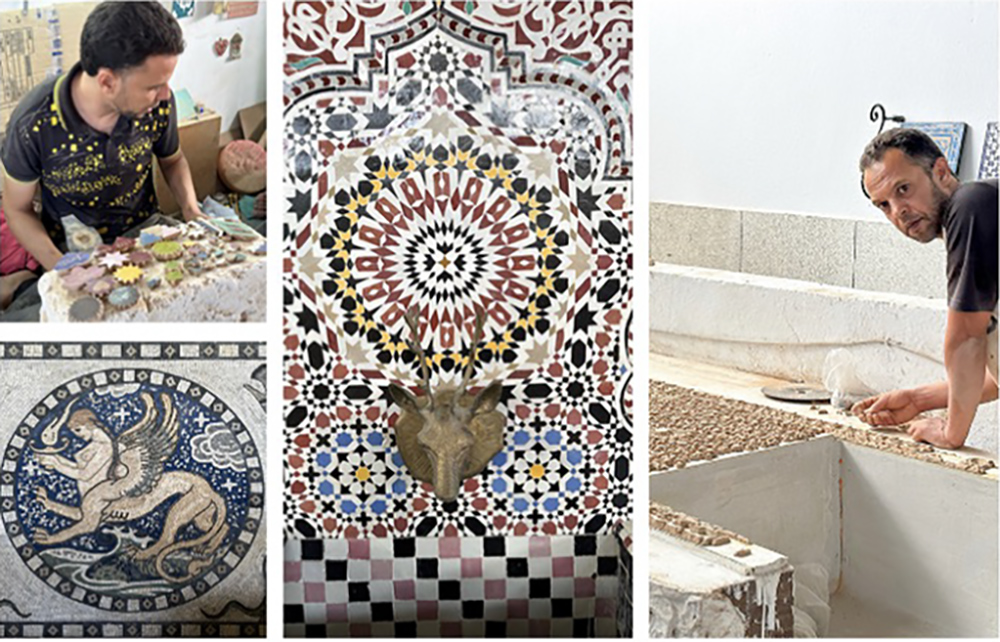
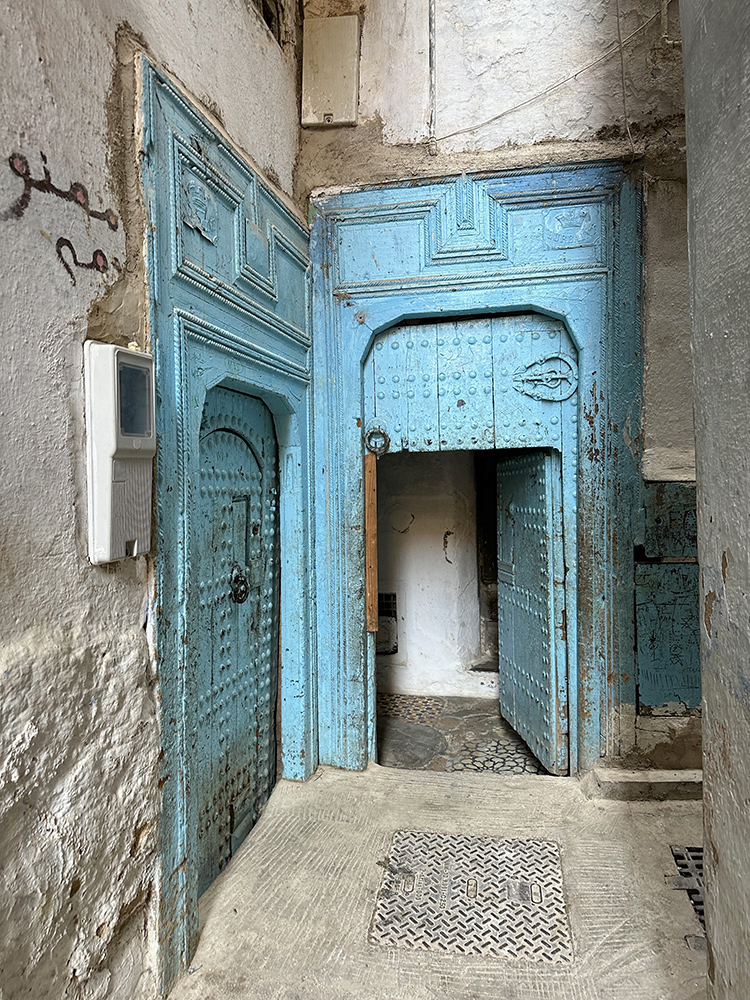
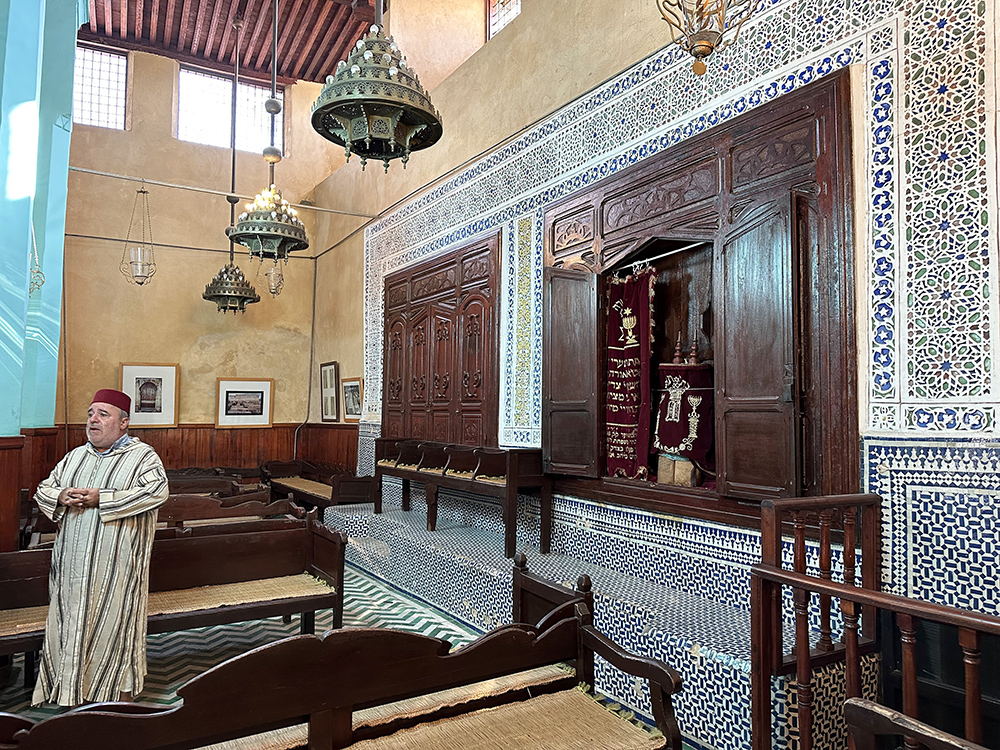
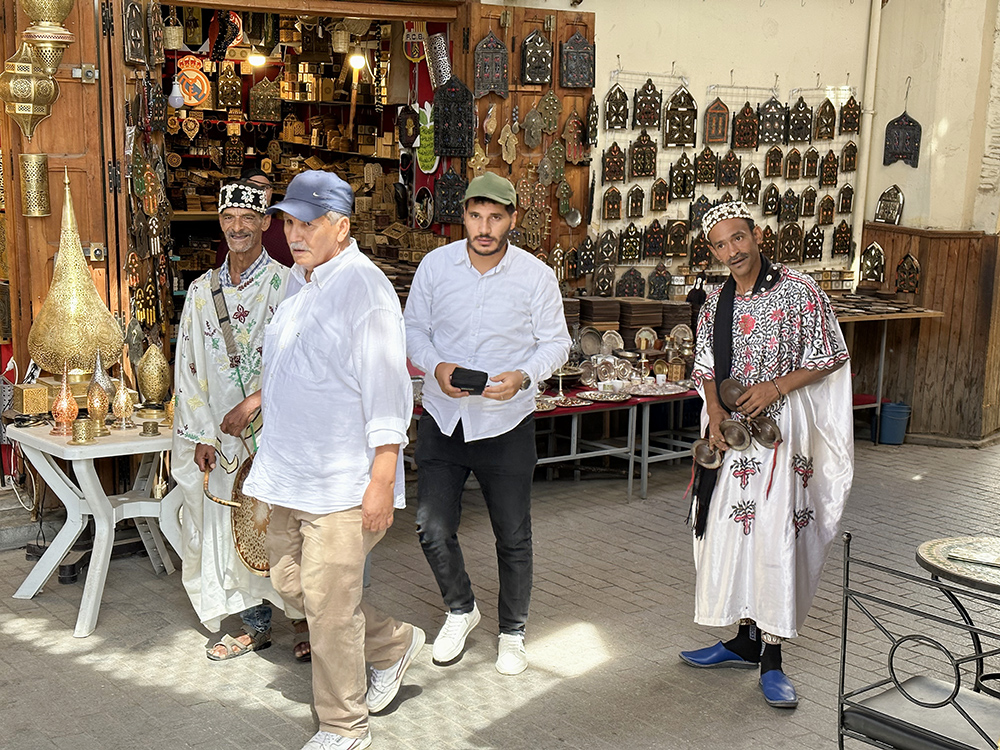
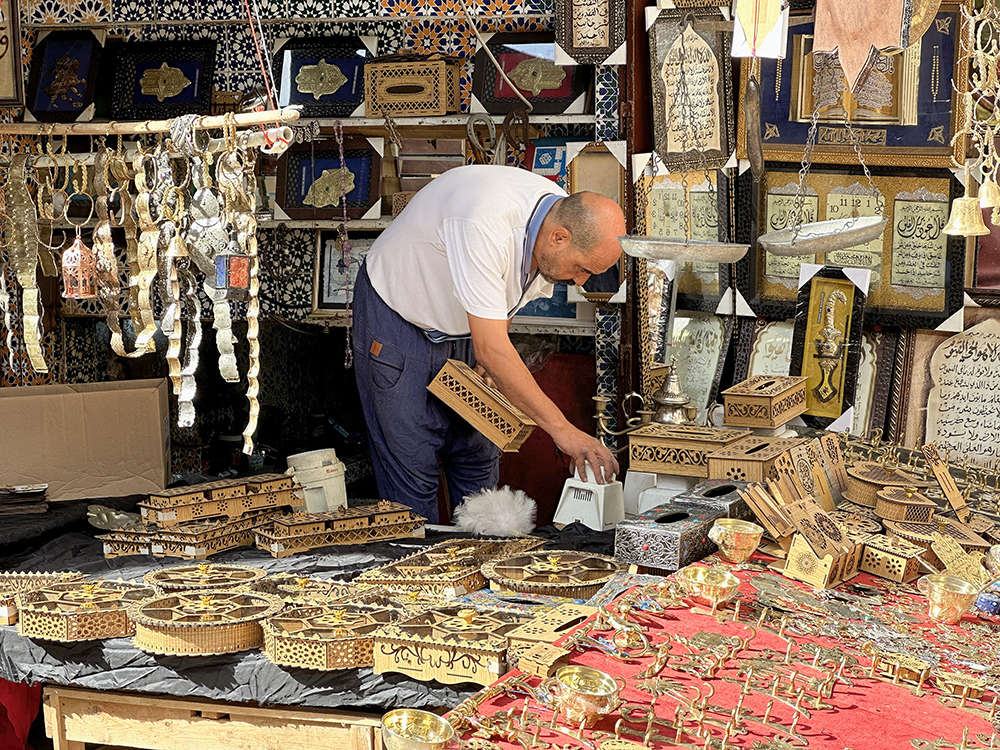
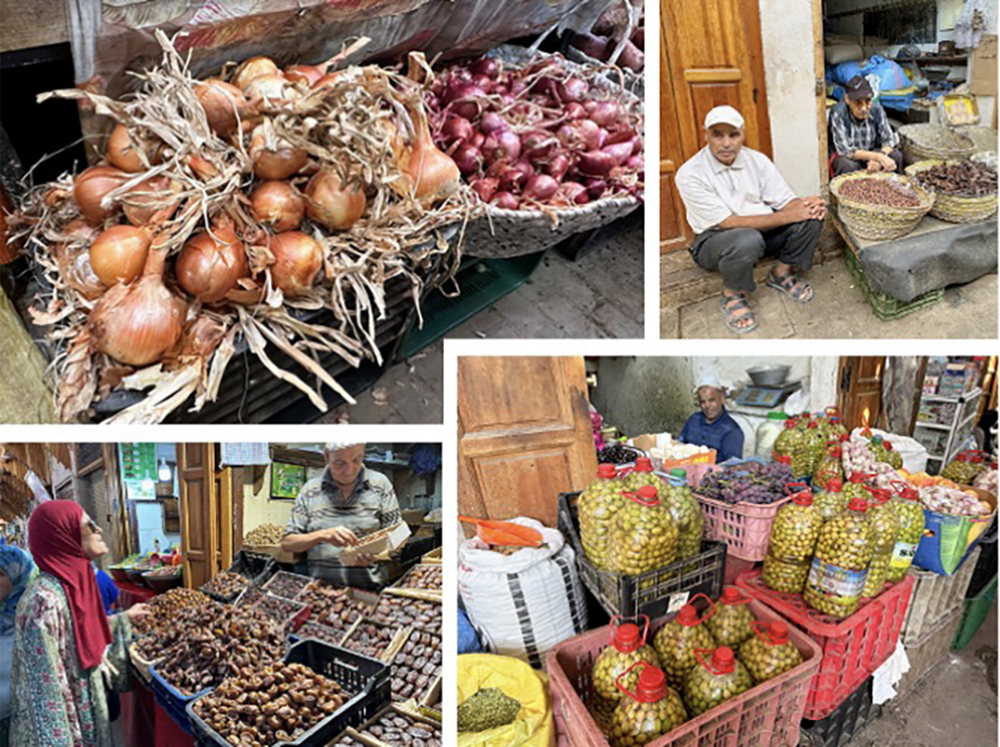
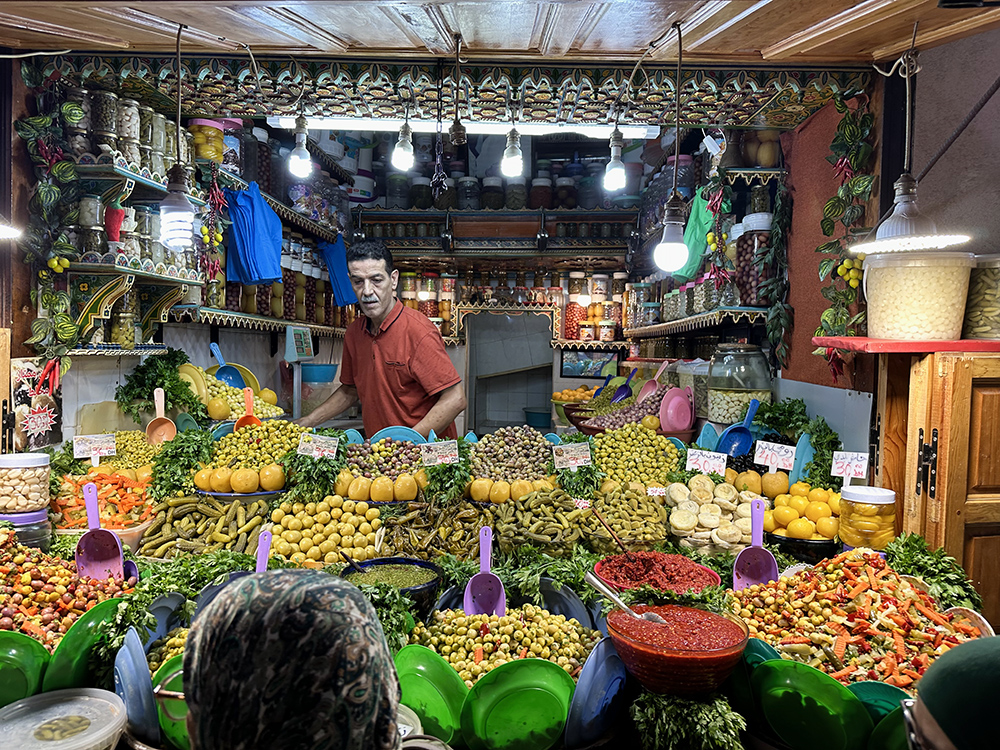
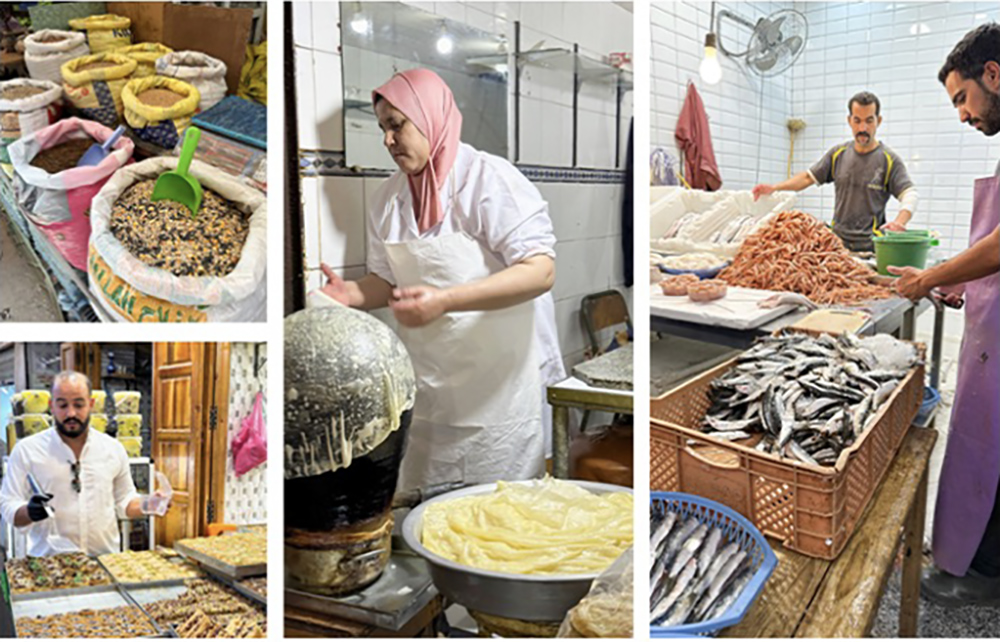
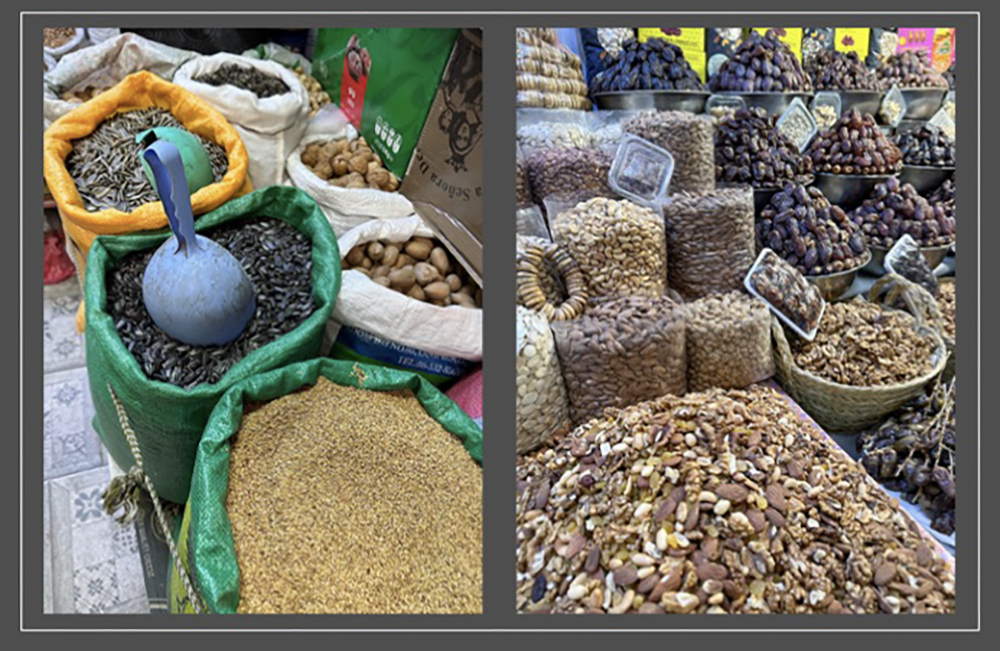
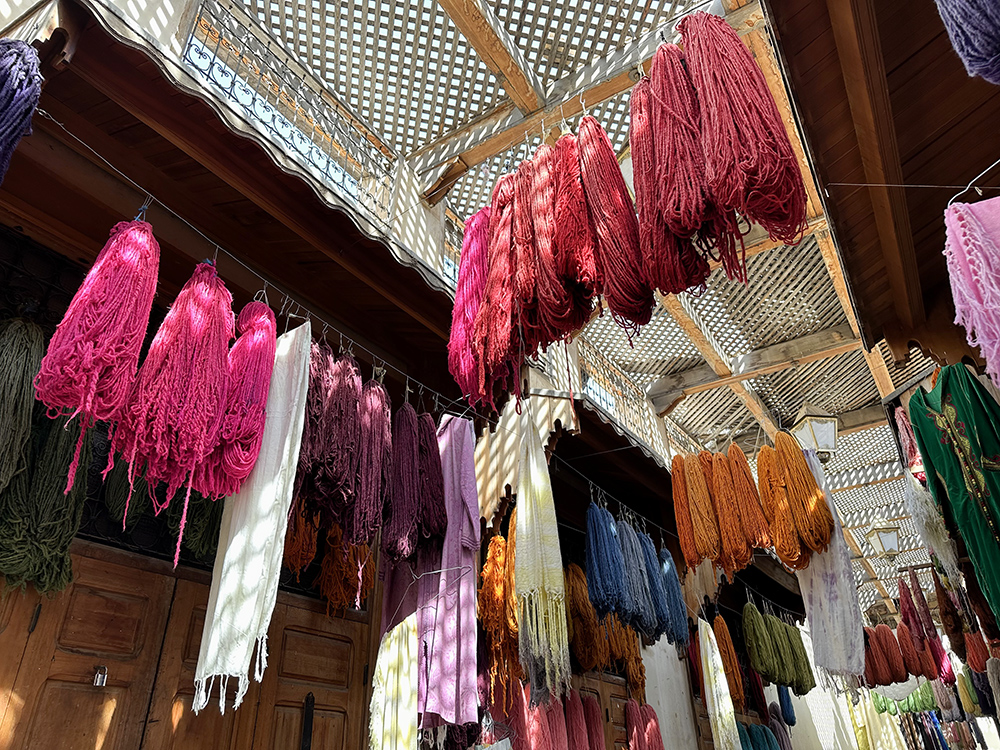
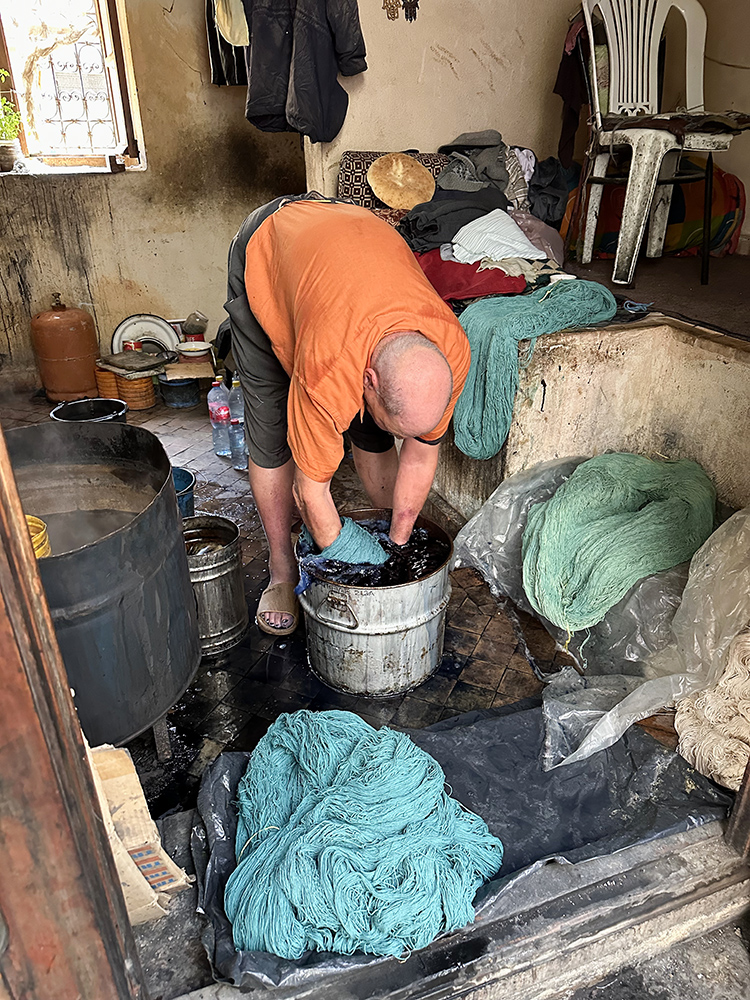
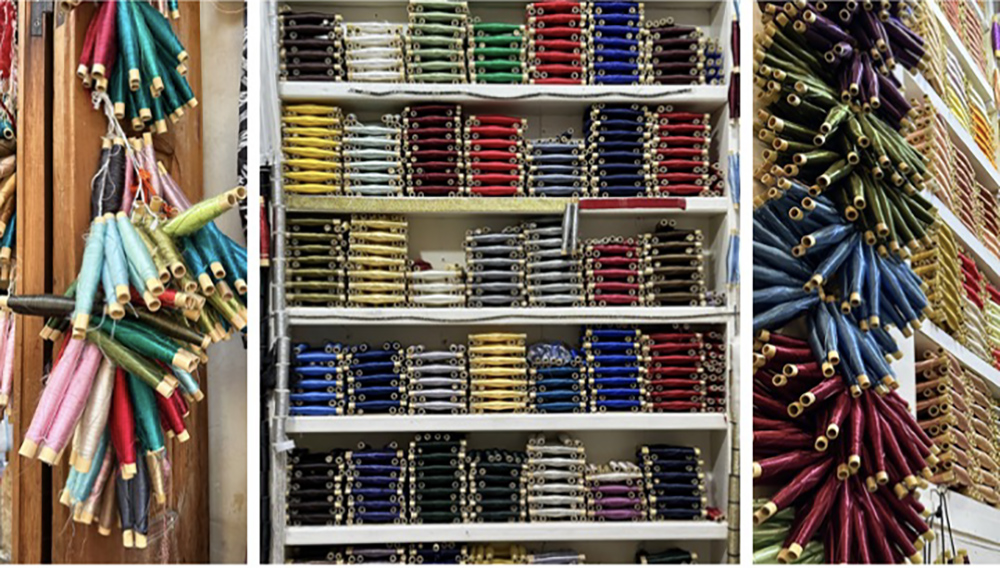
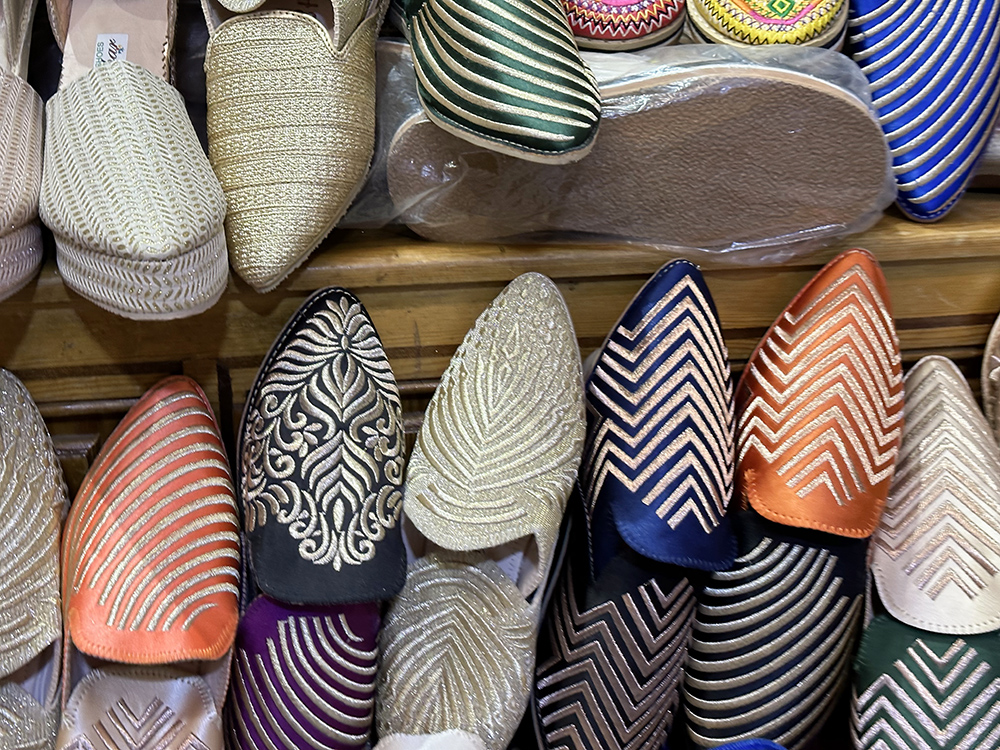
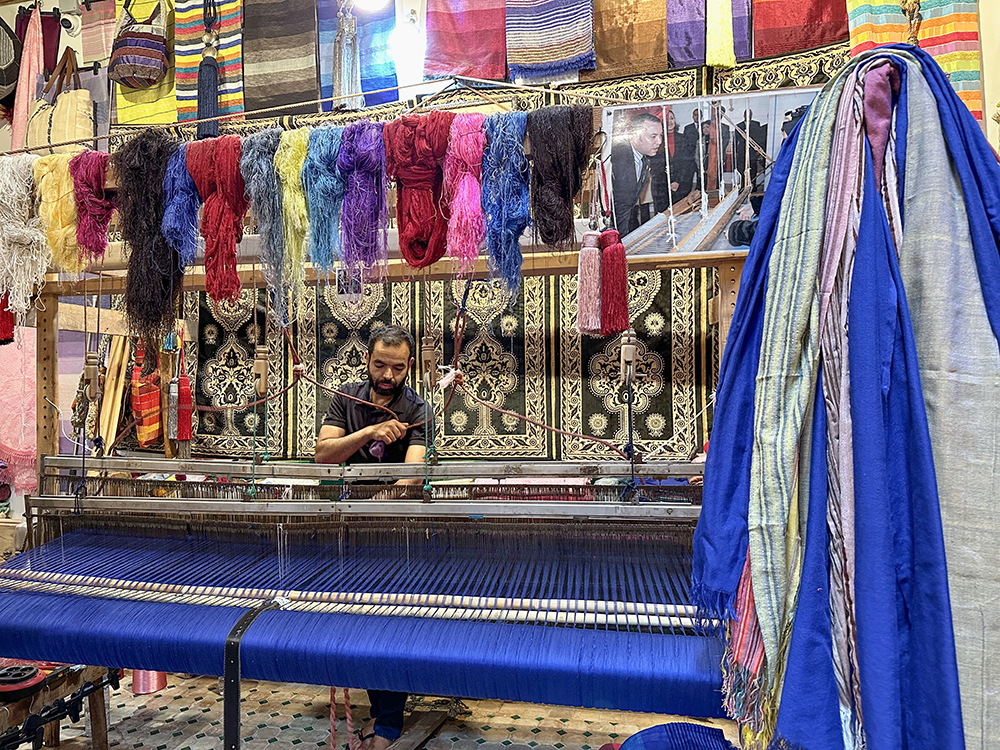
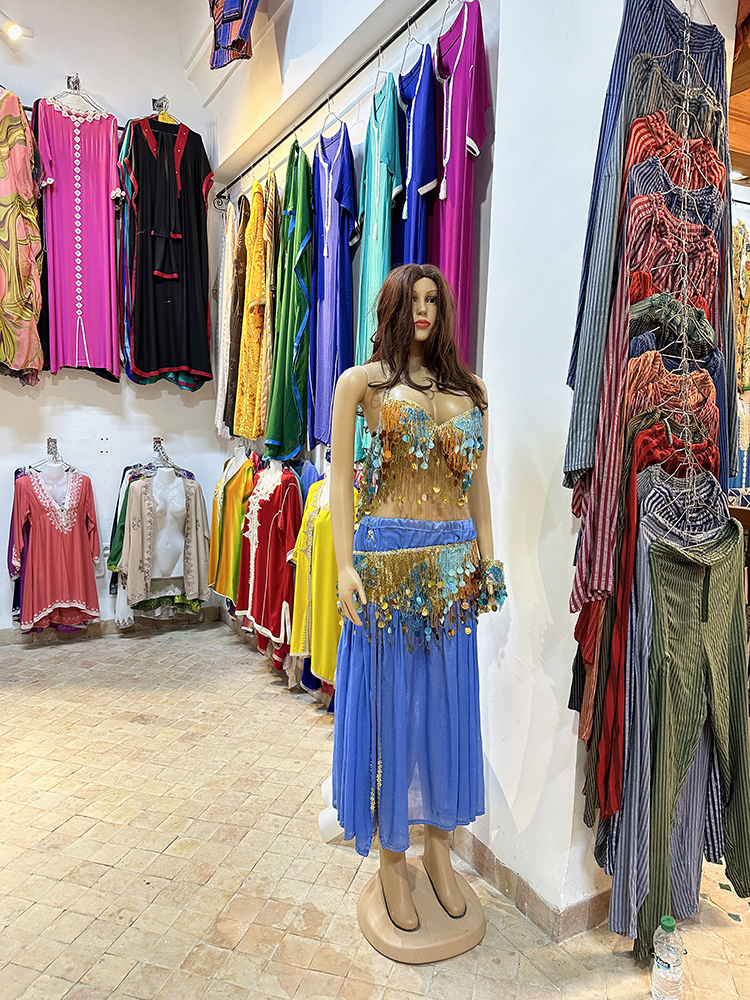
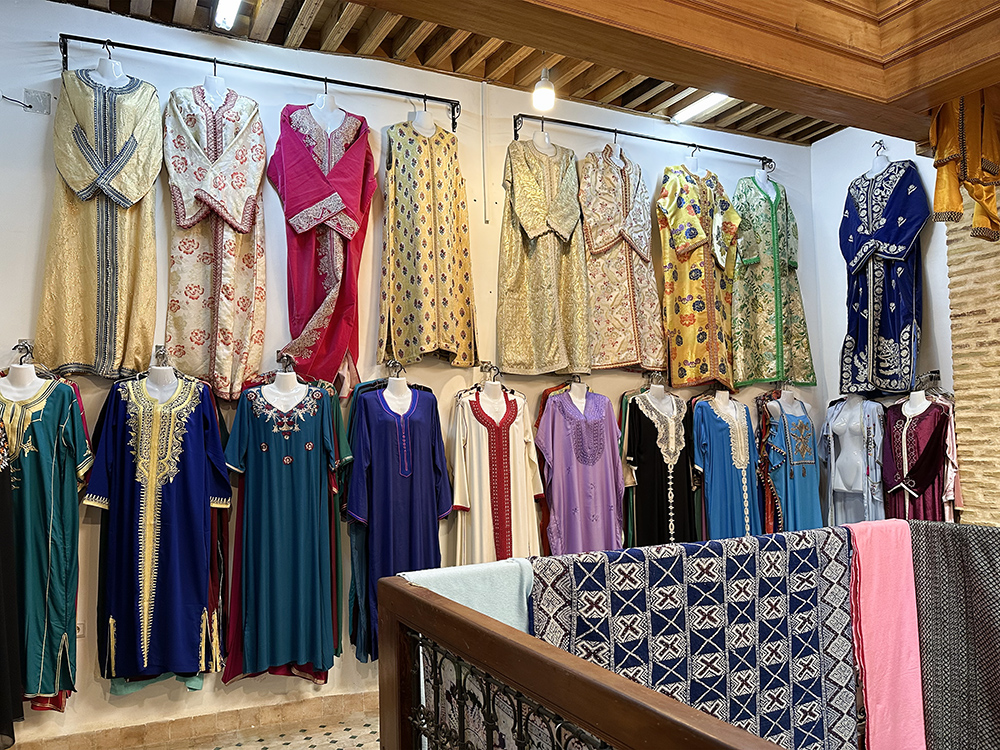
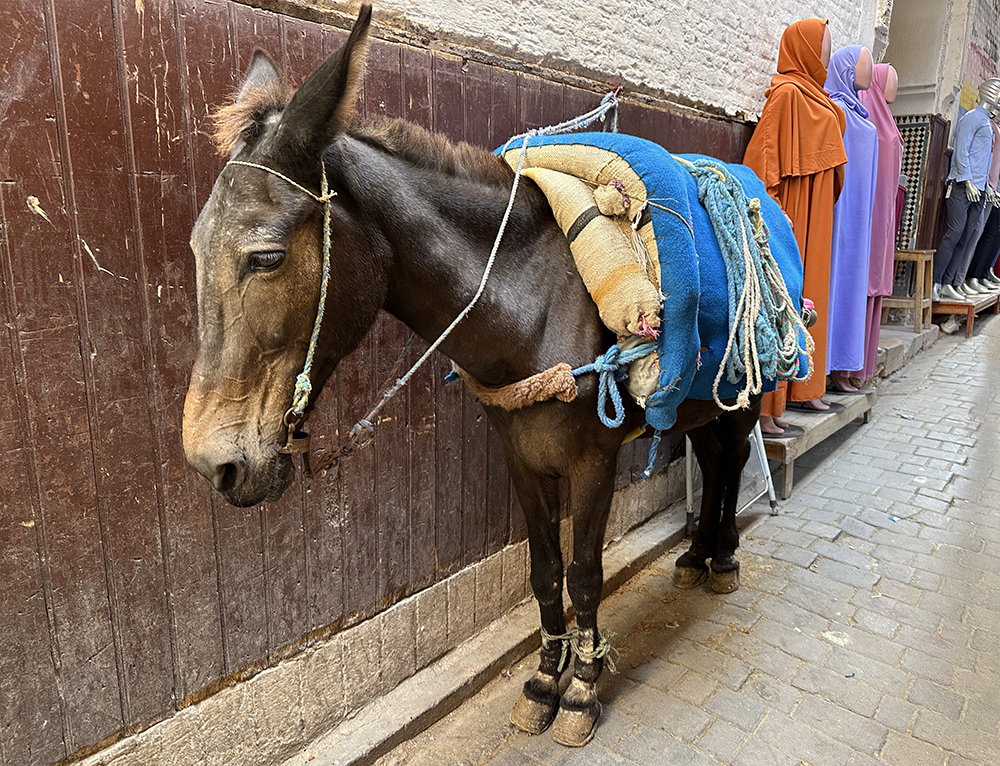
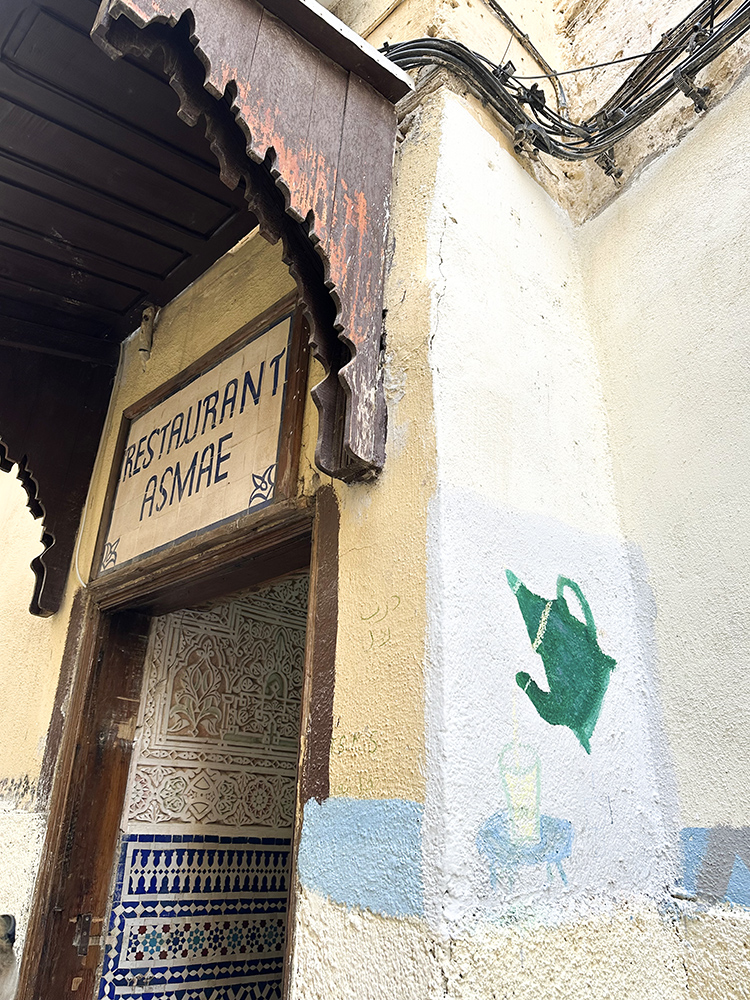
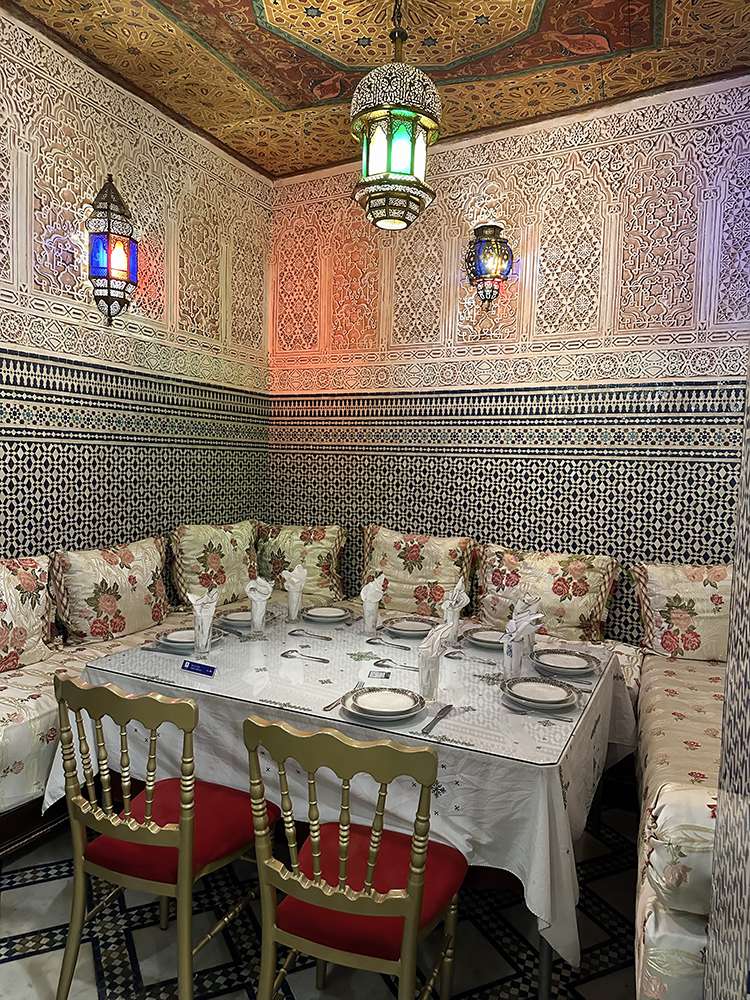
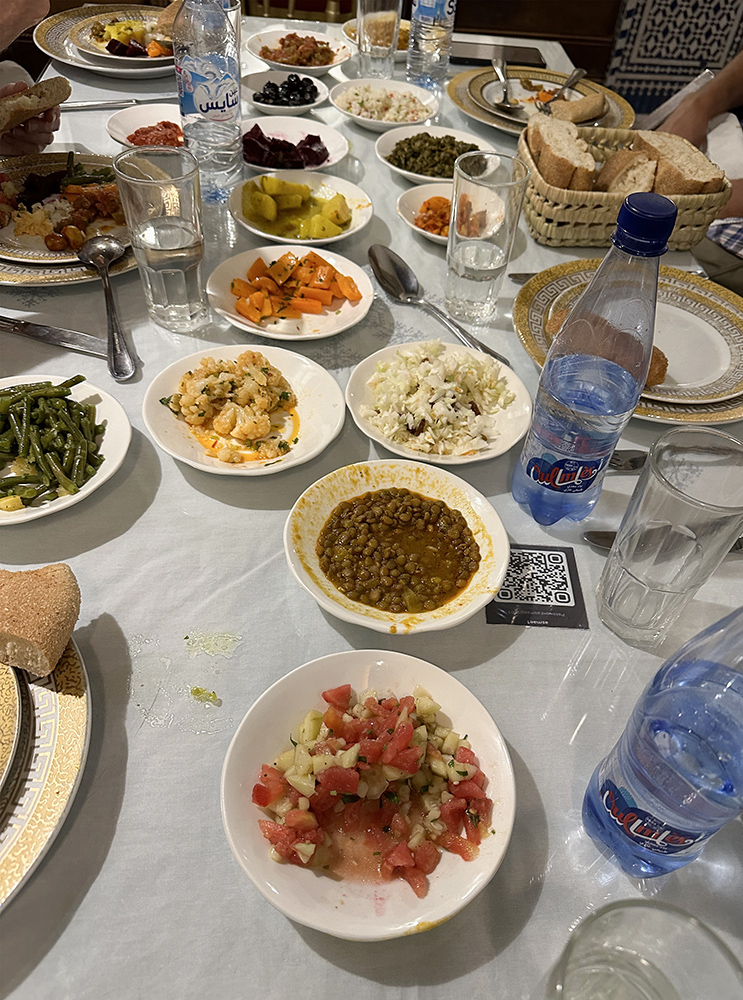
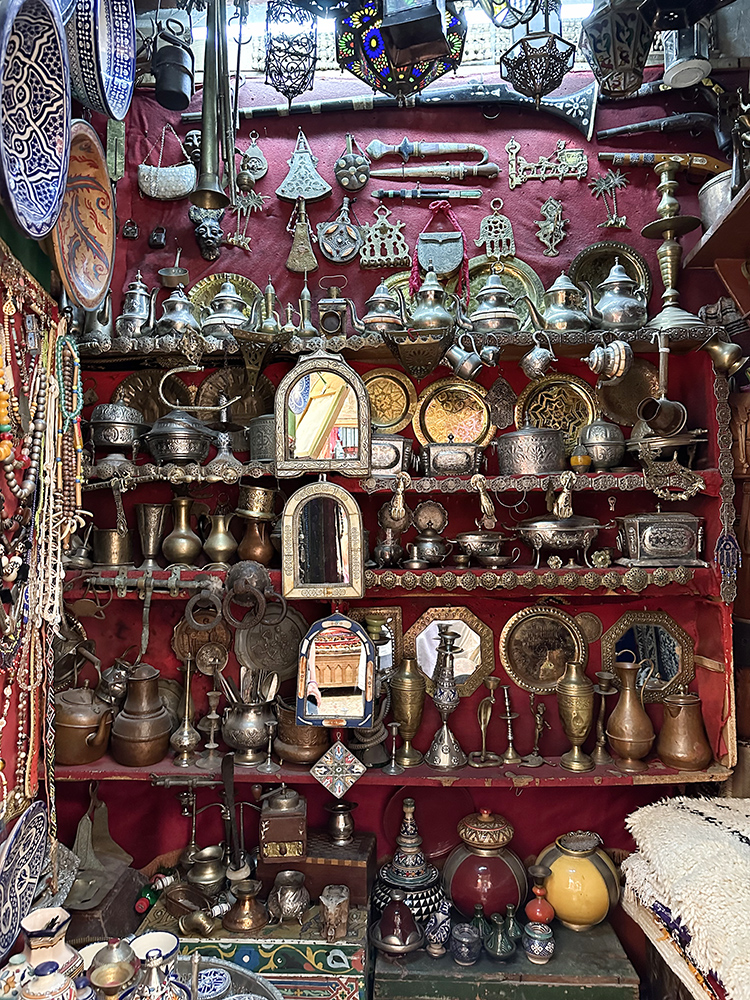
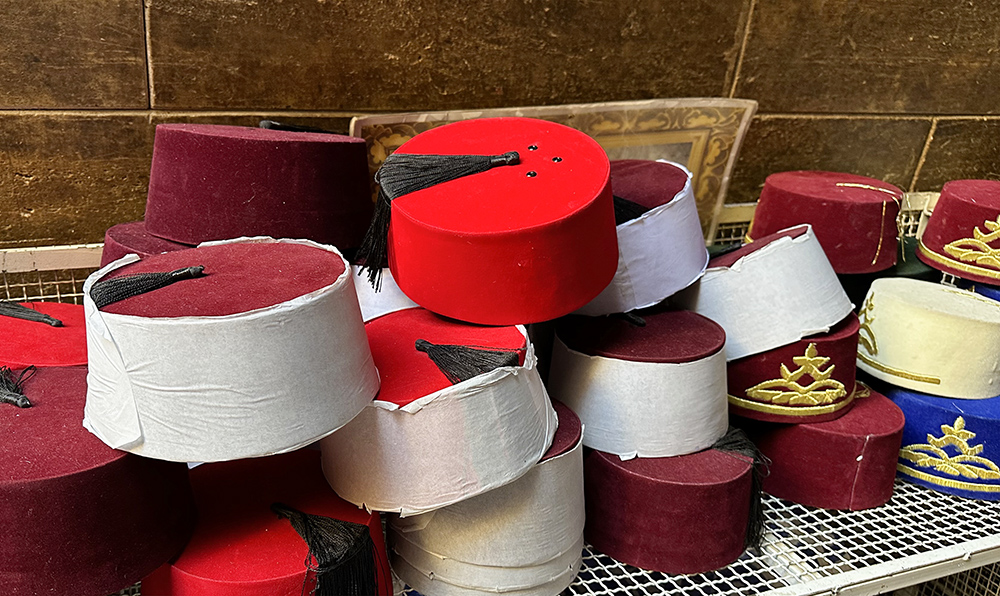
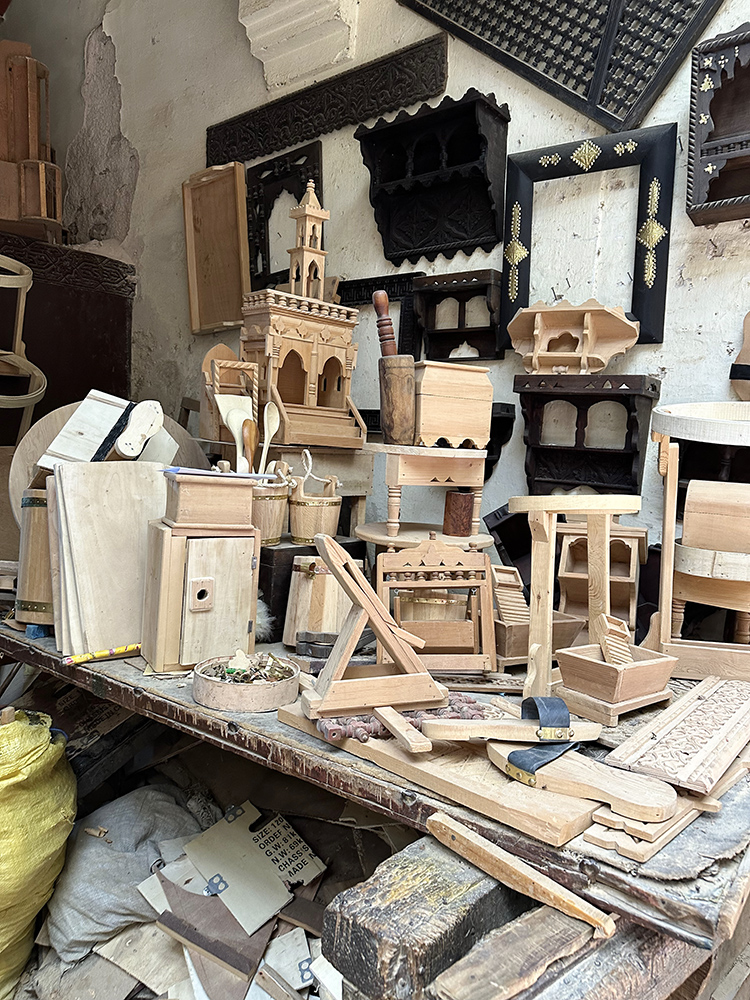
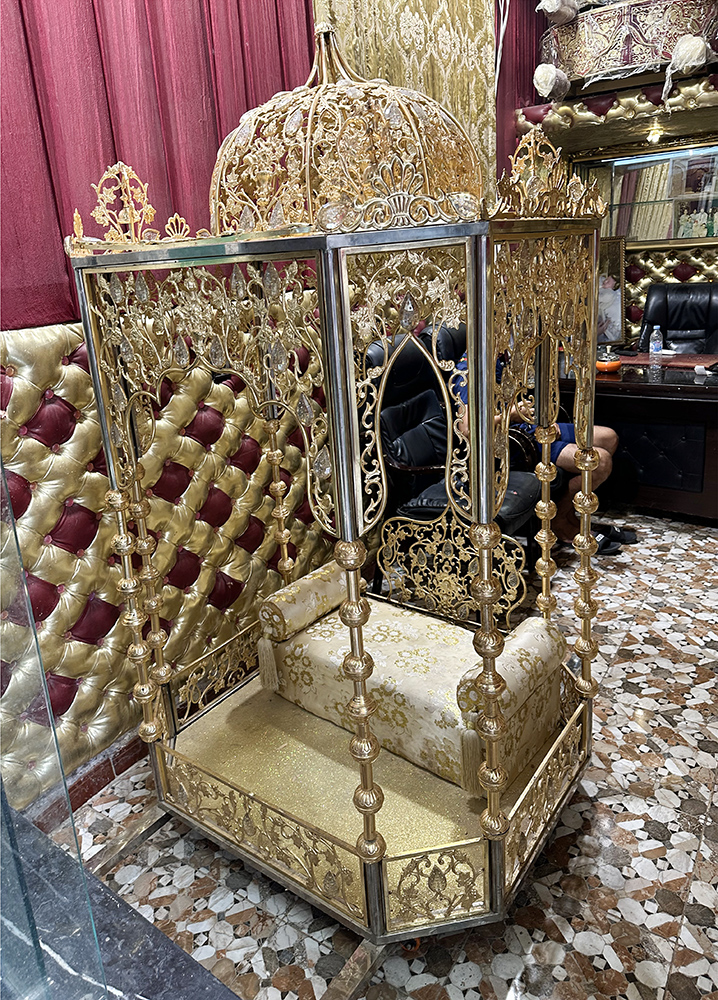
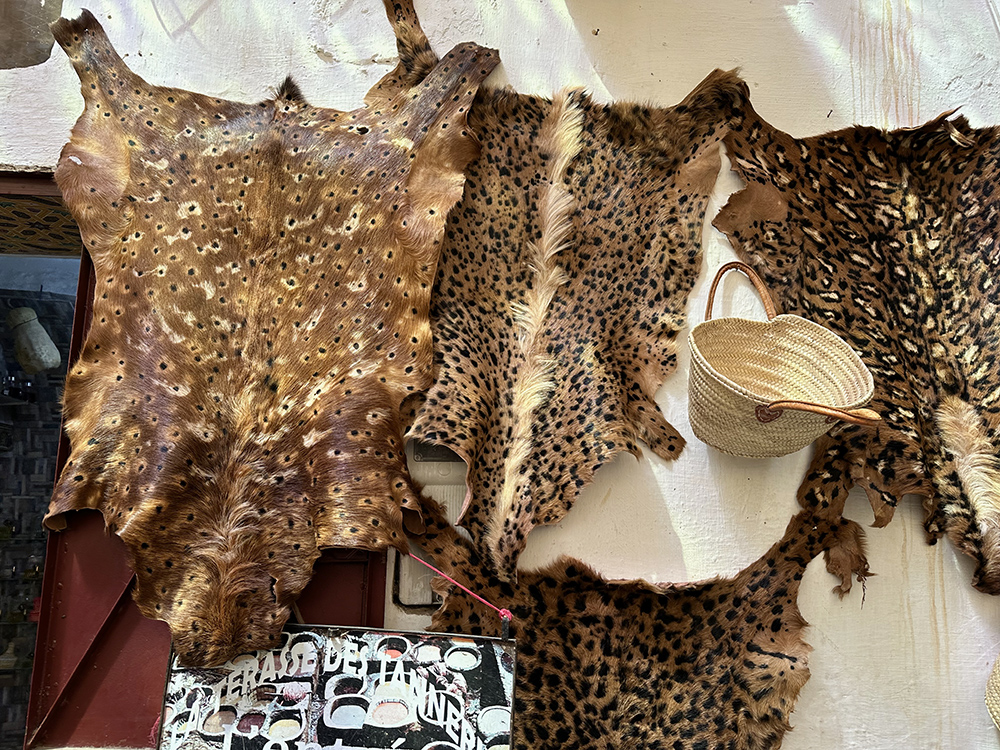
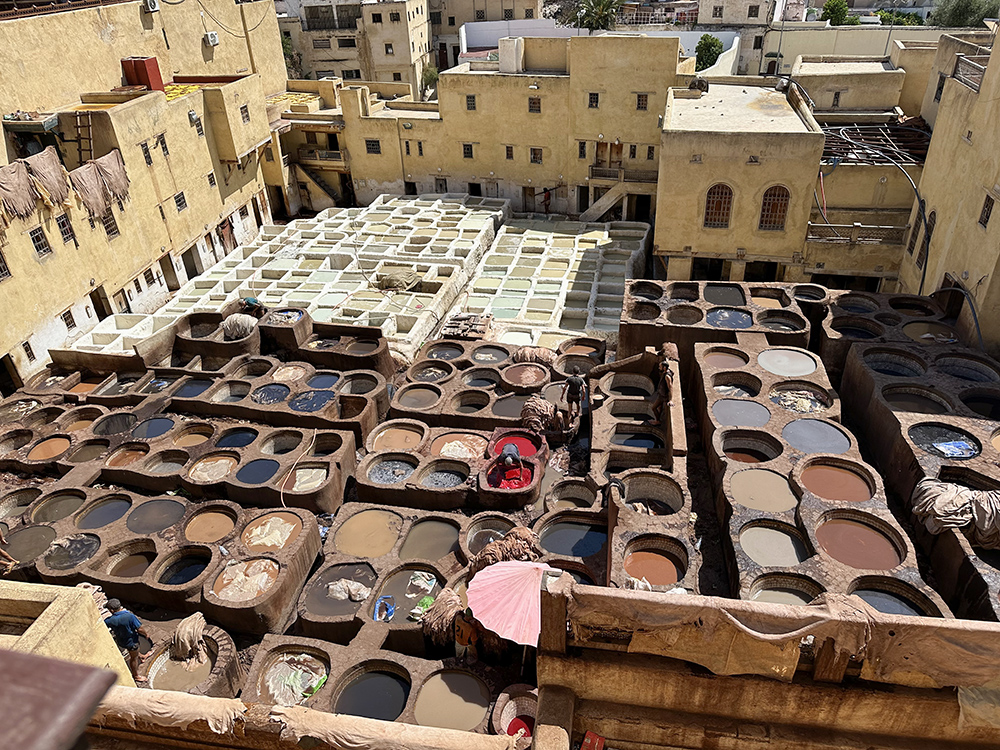
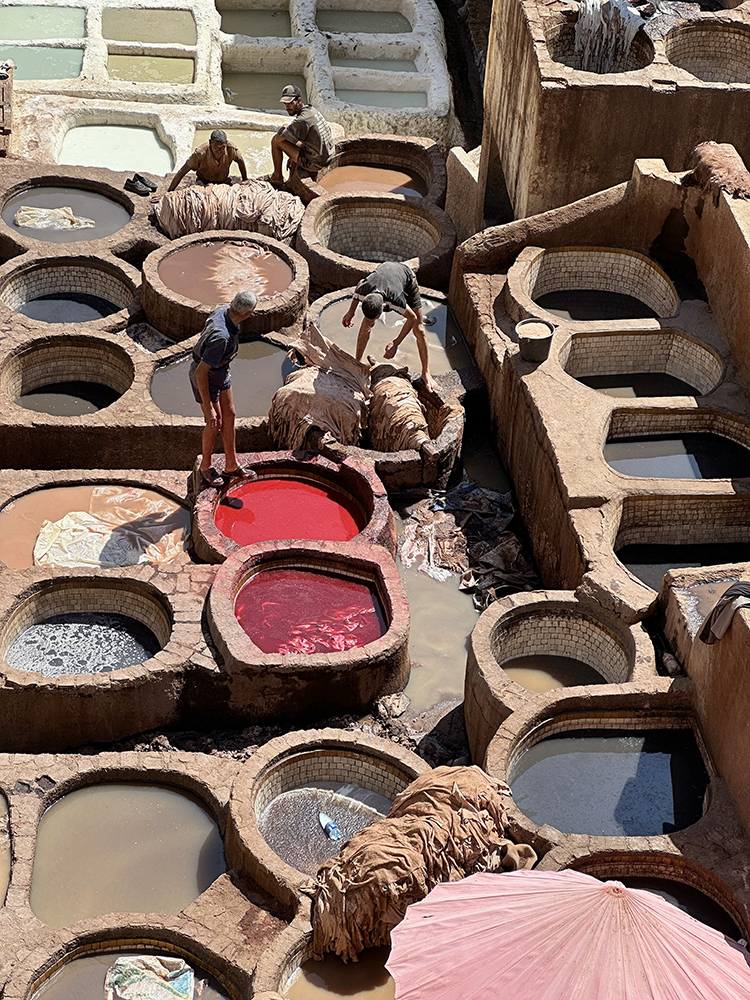
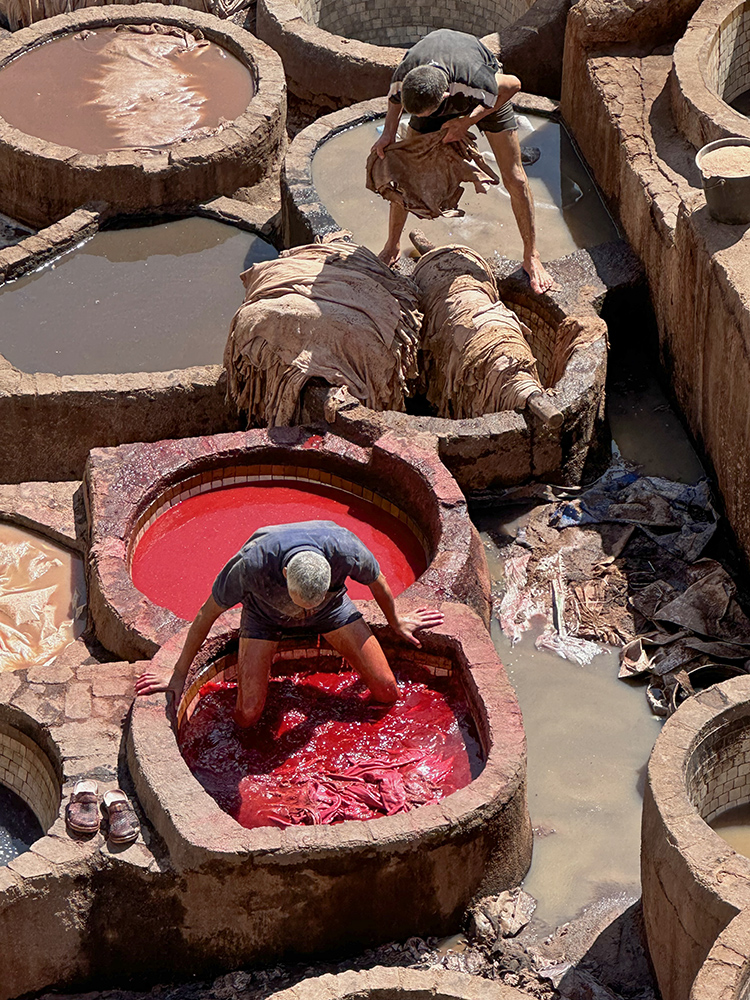
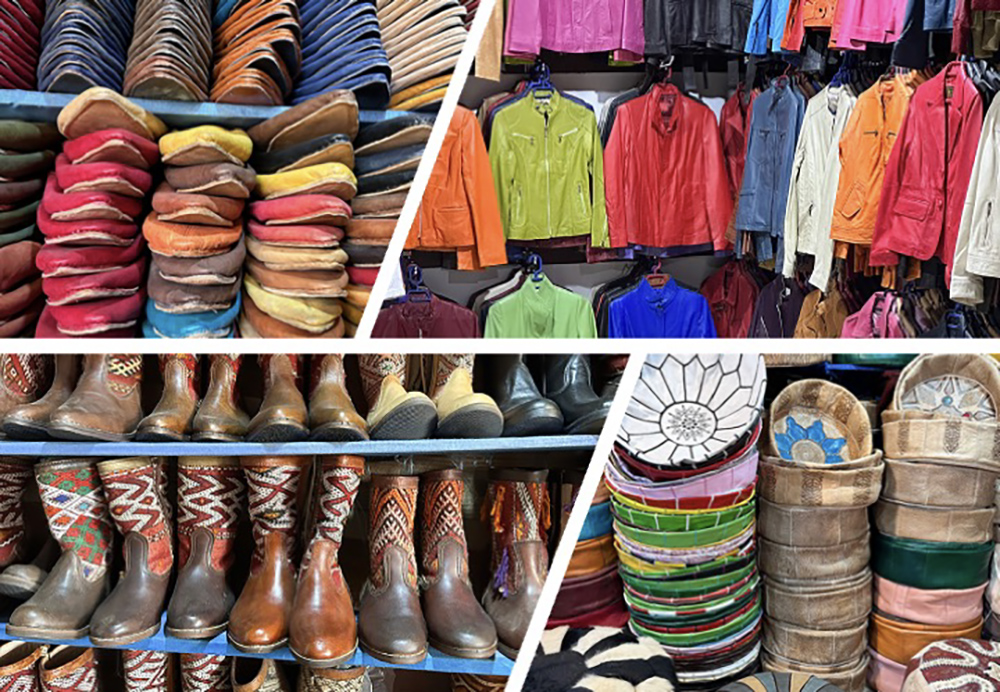
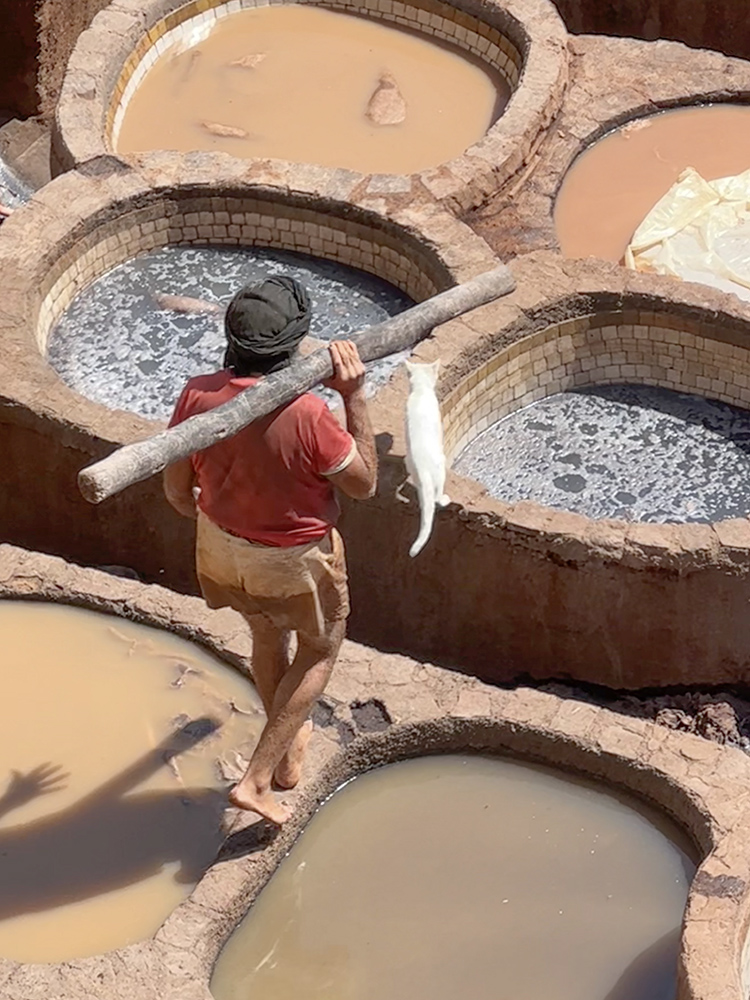
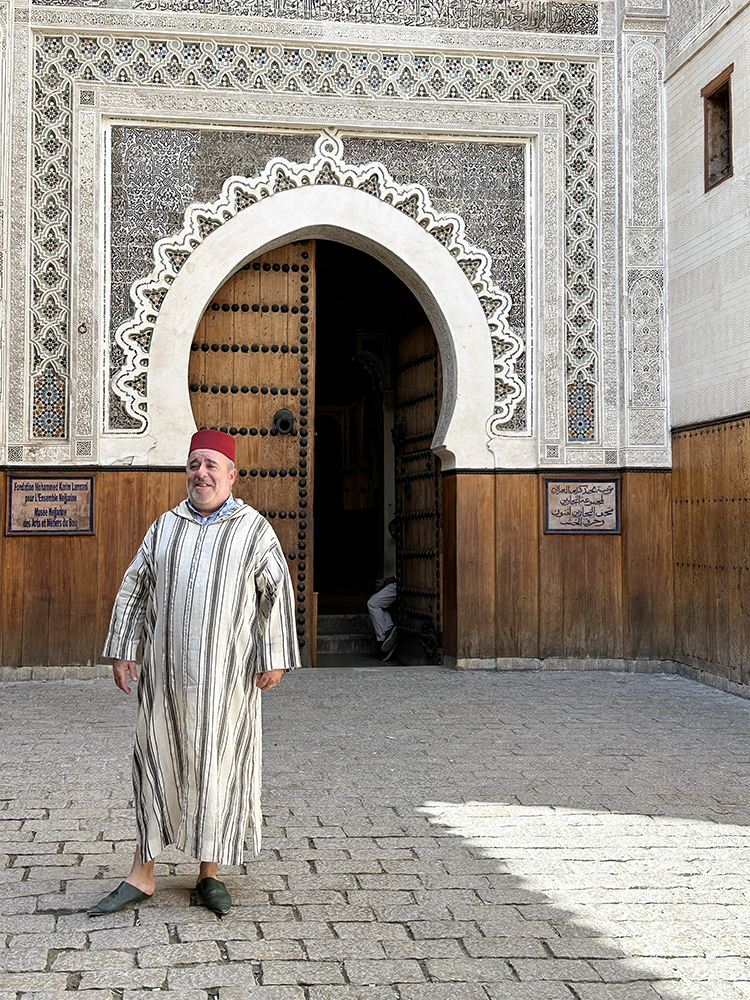
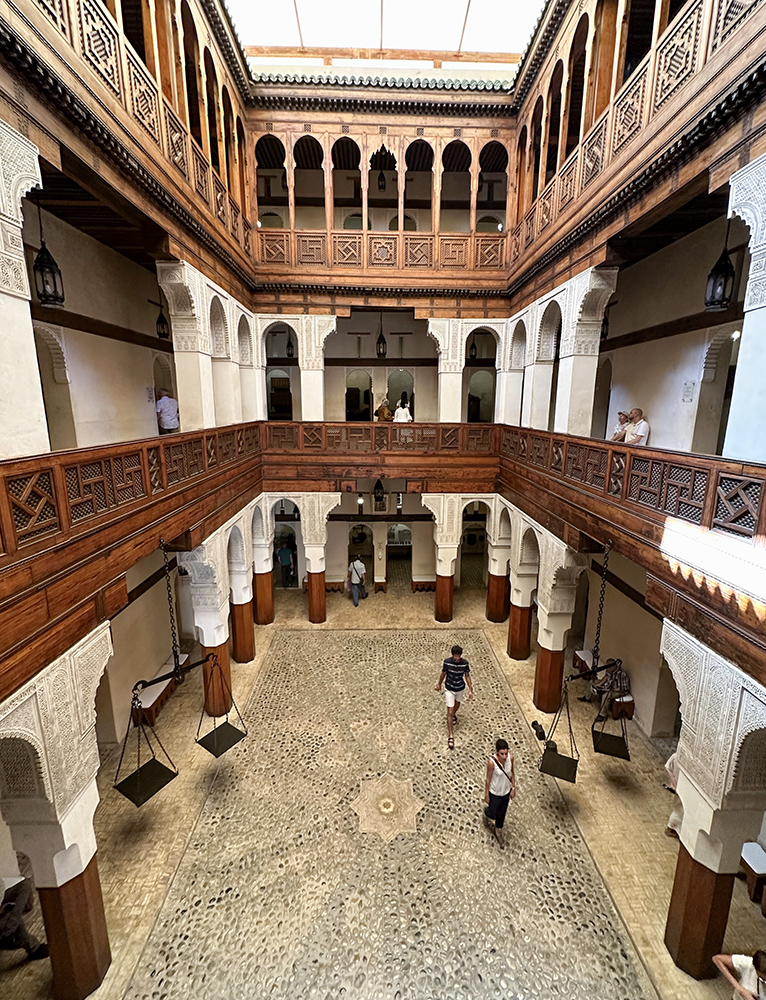
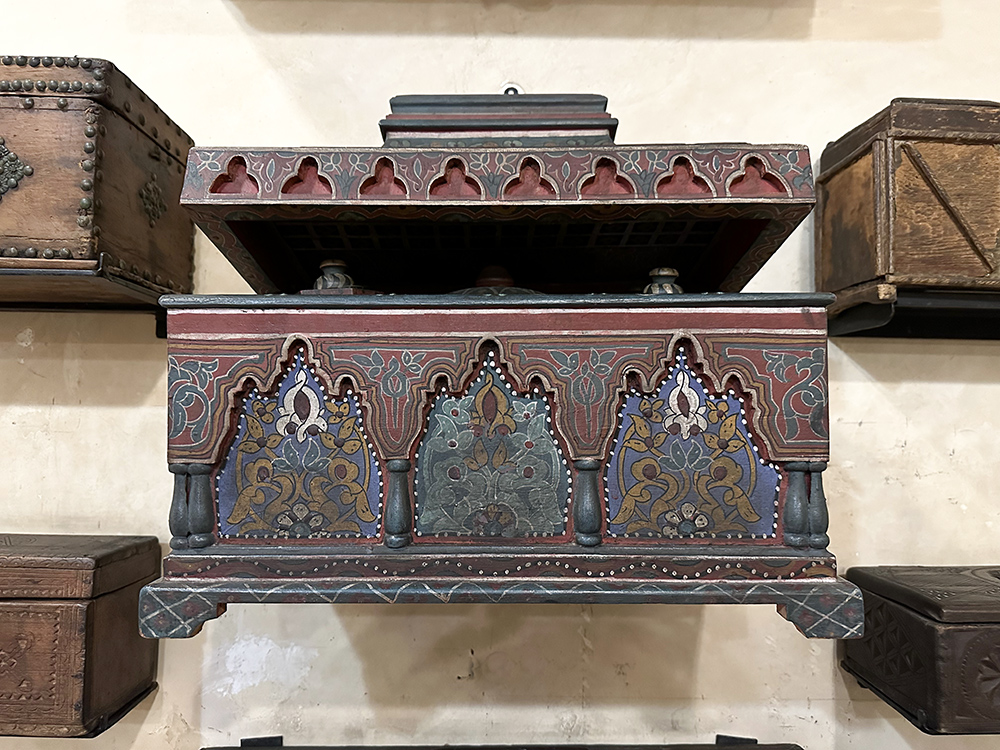
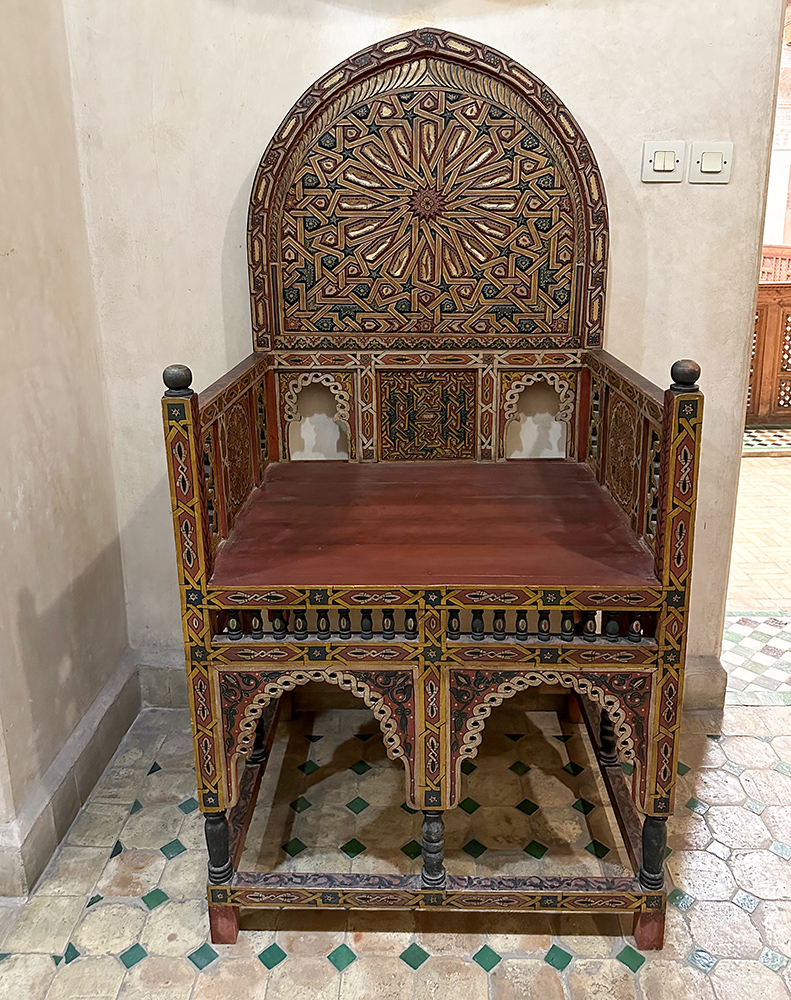
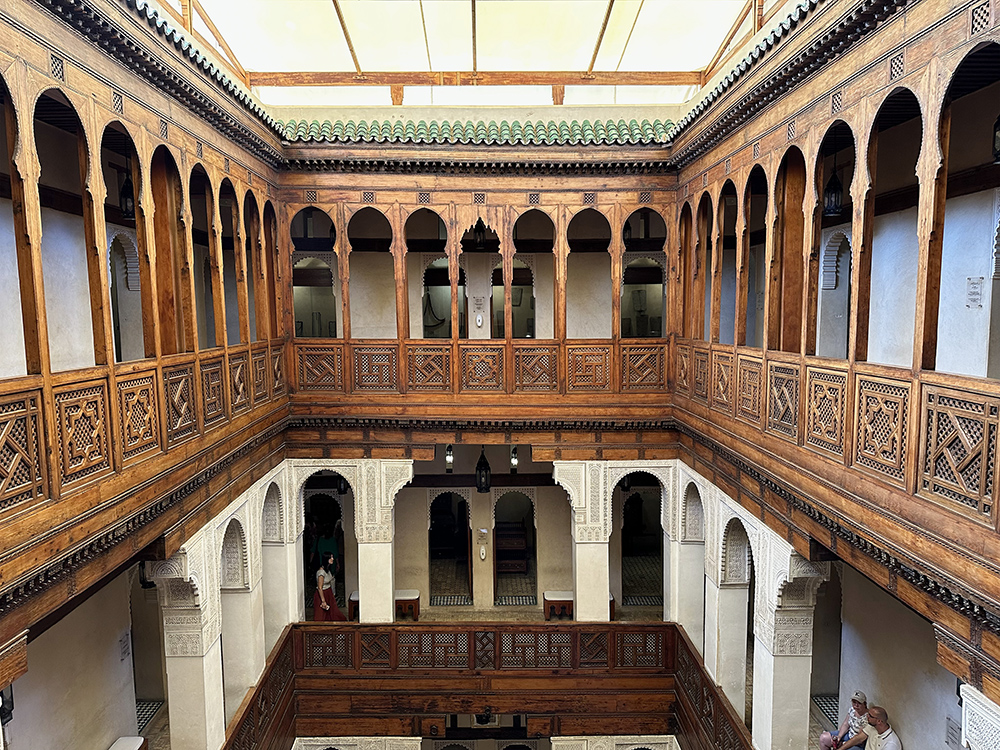
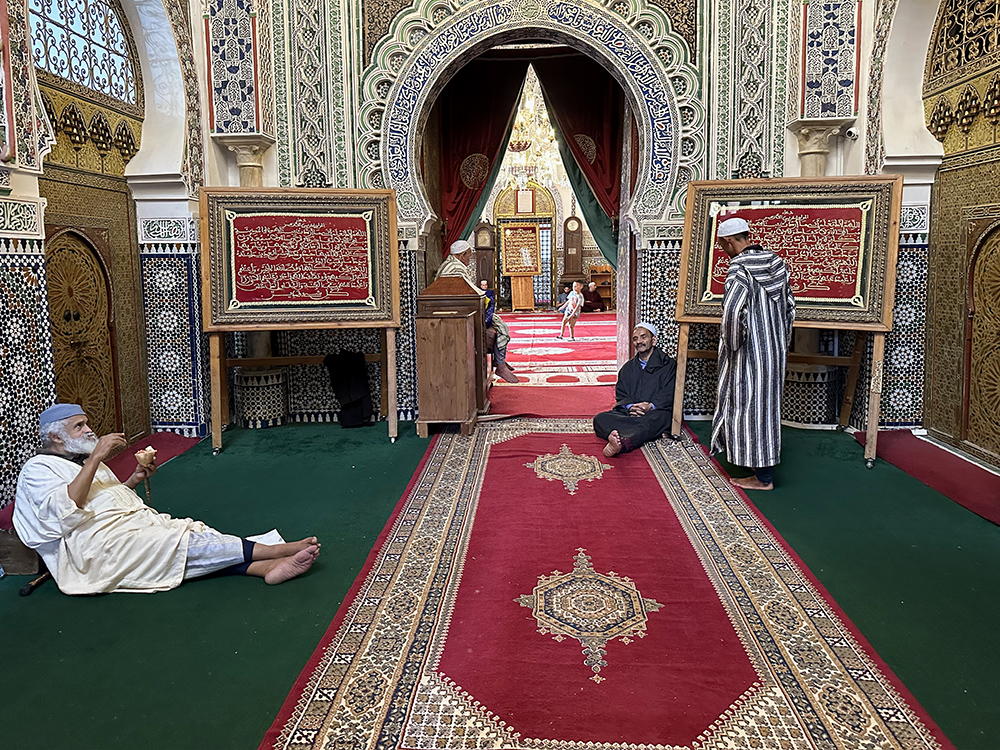
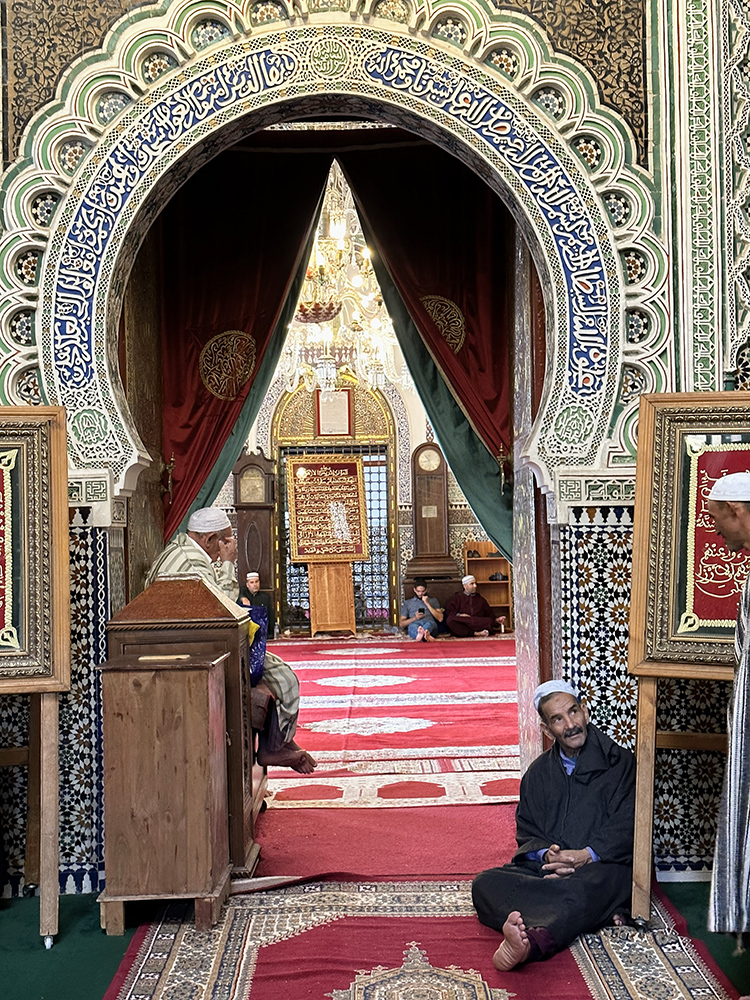
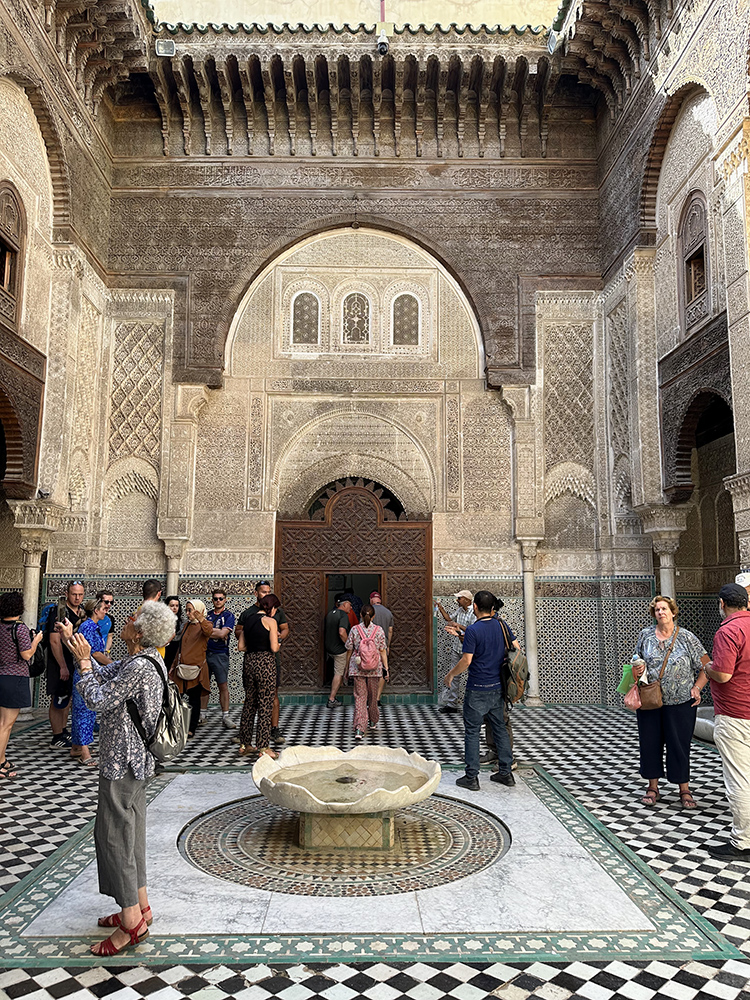
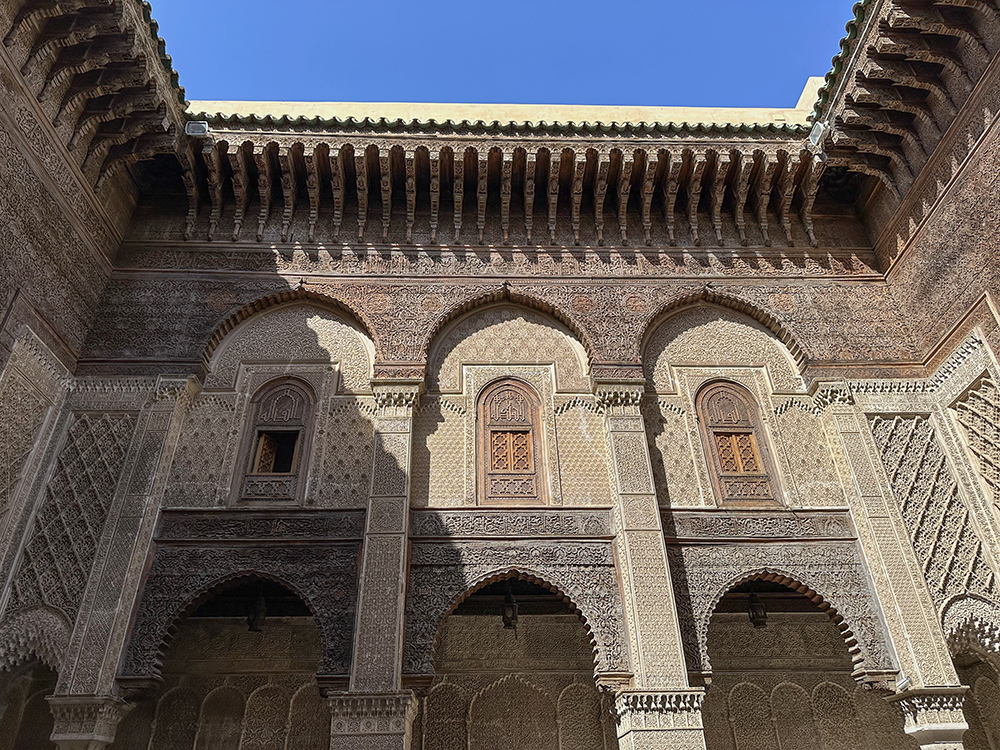
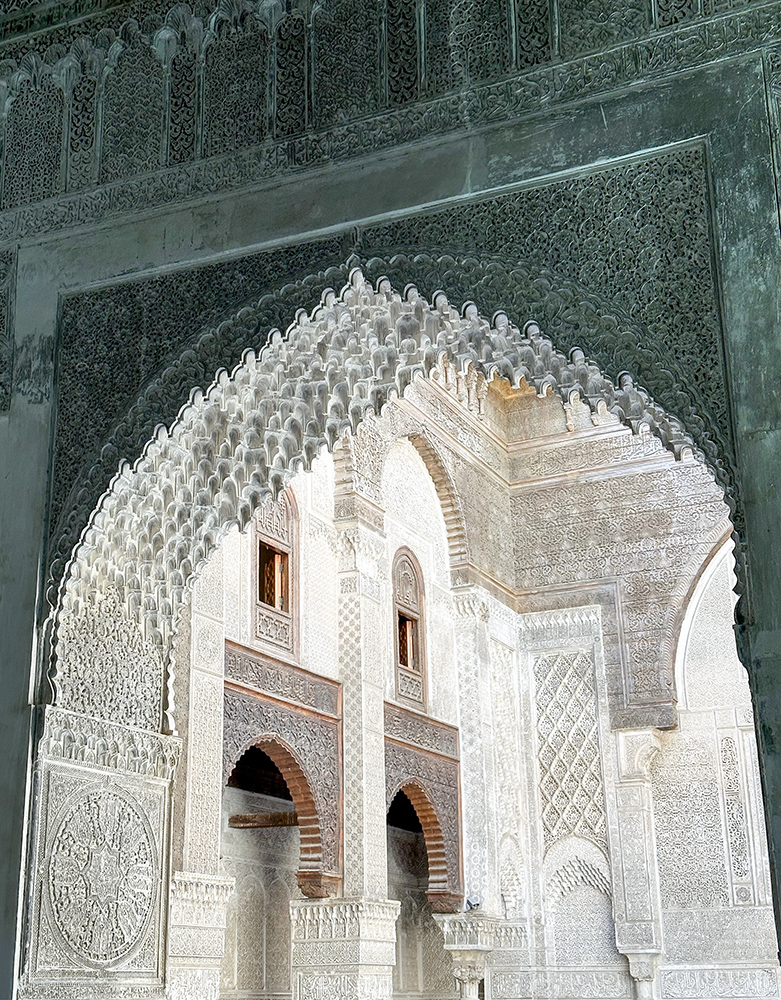
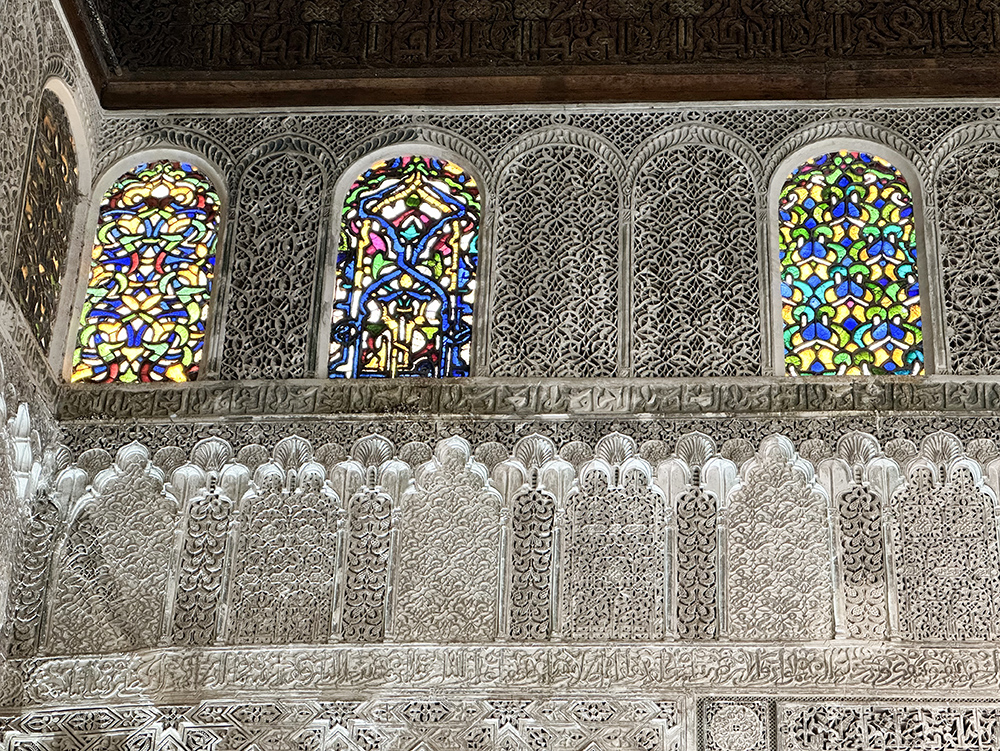
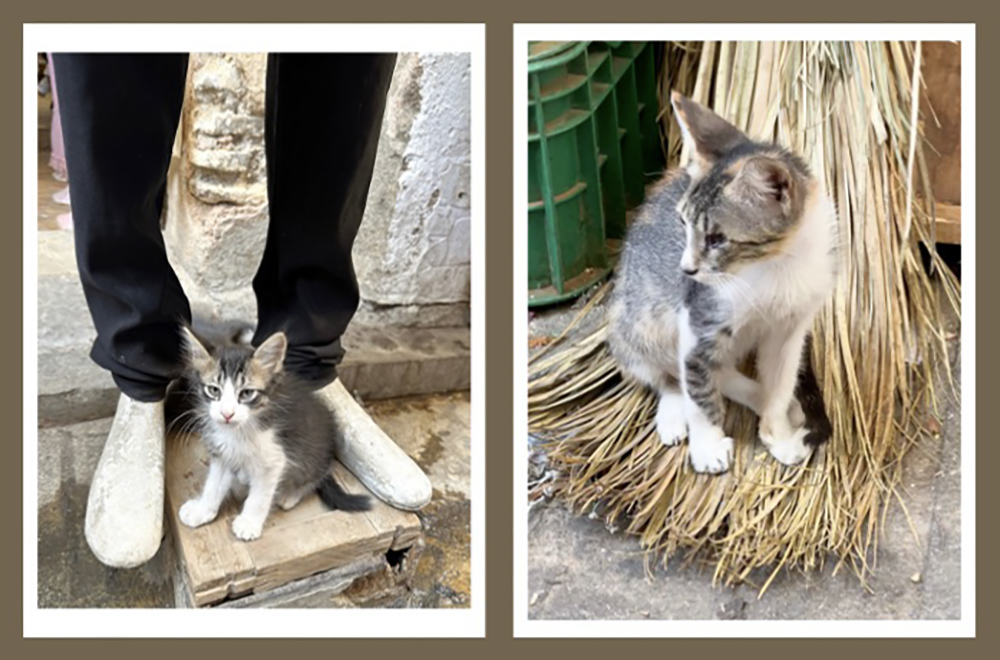
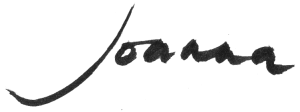
Hello my dear Joanna,
Thank you so much for sharing beautiful snapshots. I can learn a lot from the pictures, stories and your narrations as well.
Miss you and your pictures (like a glimpse in the mirror/ same colour but different things combined together like a glass and a lamp 😁) and your speech too!